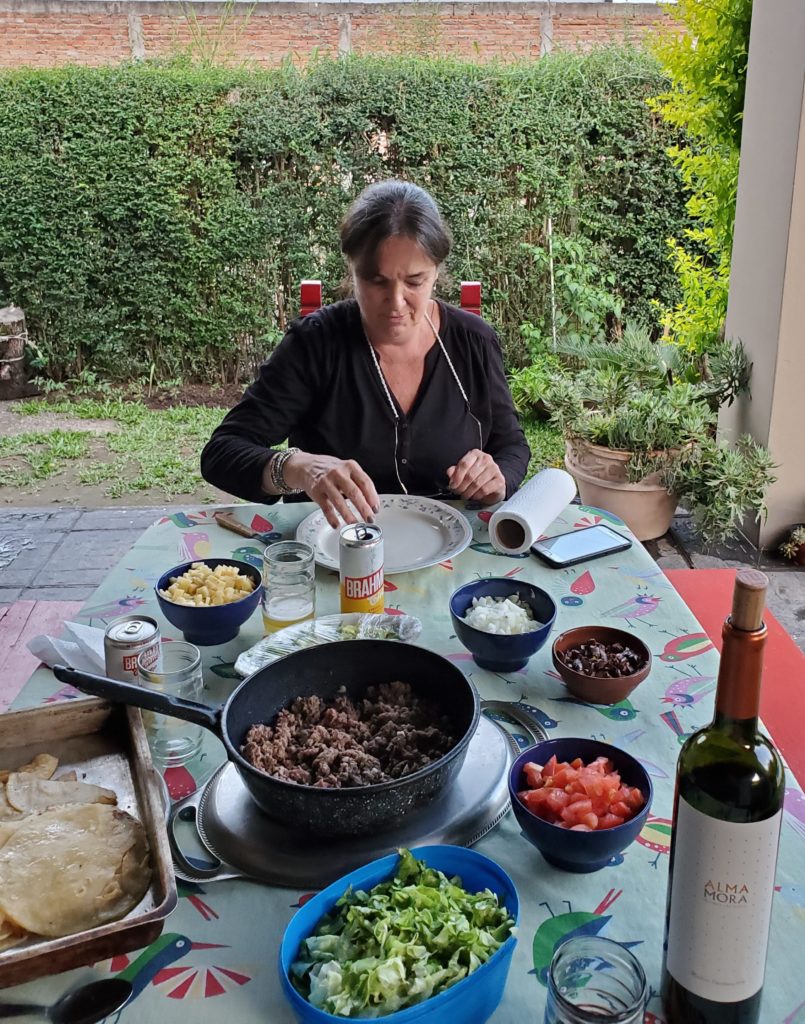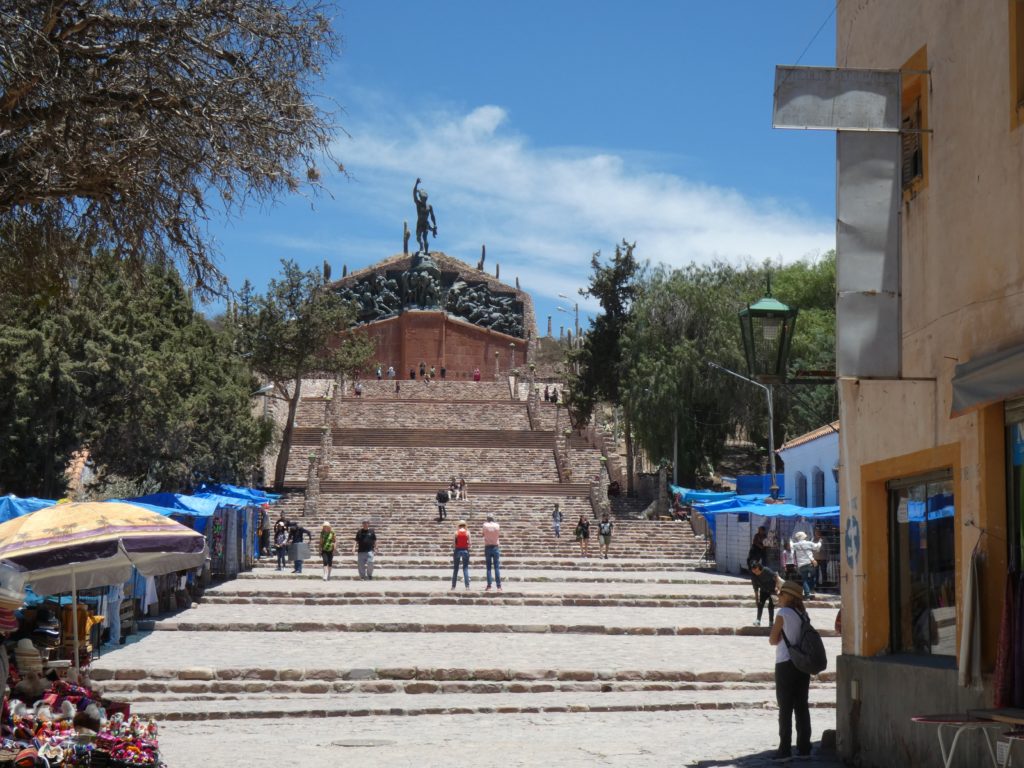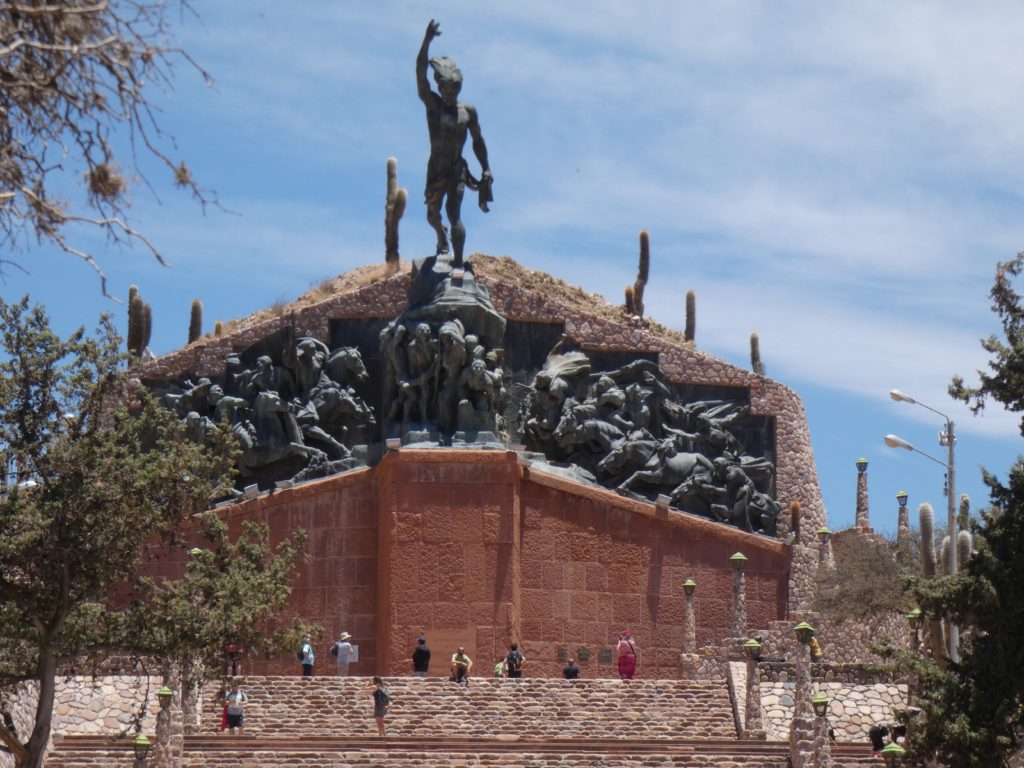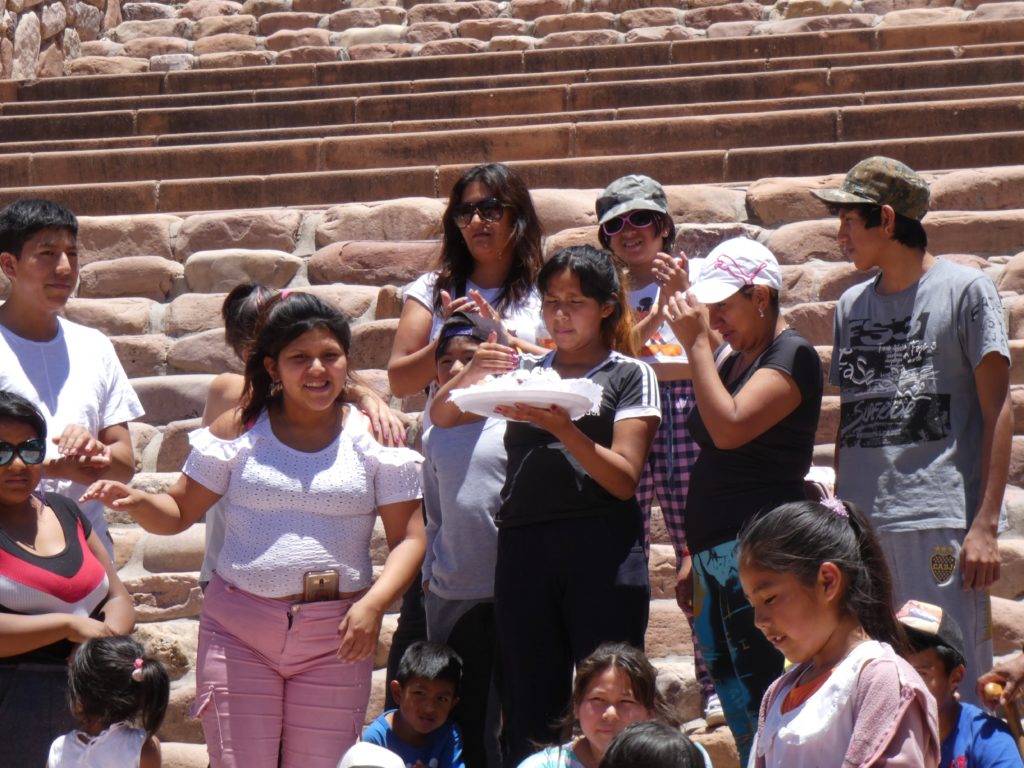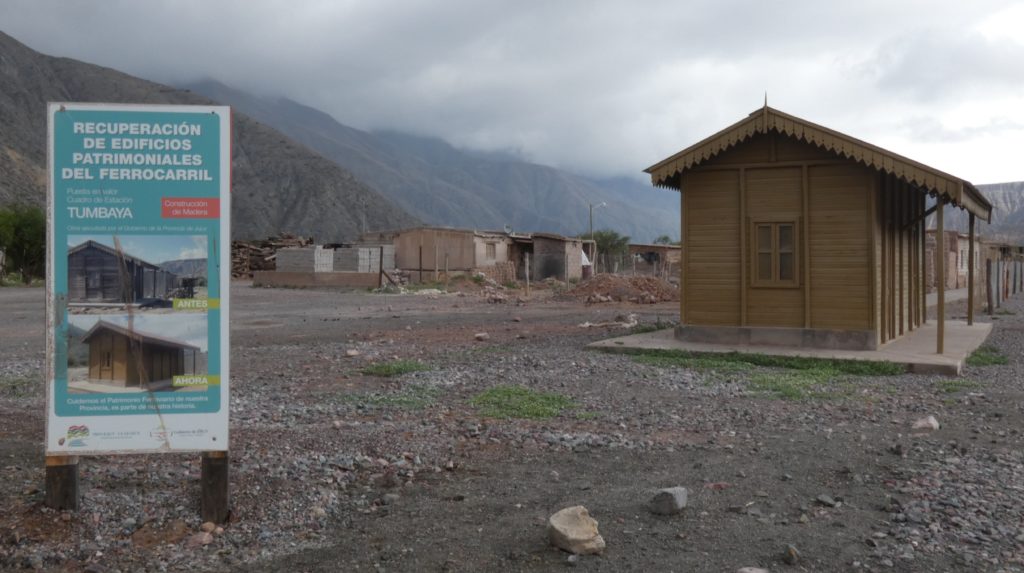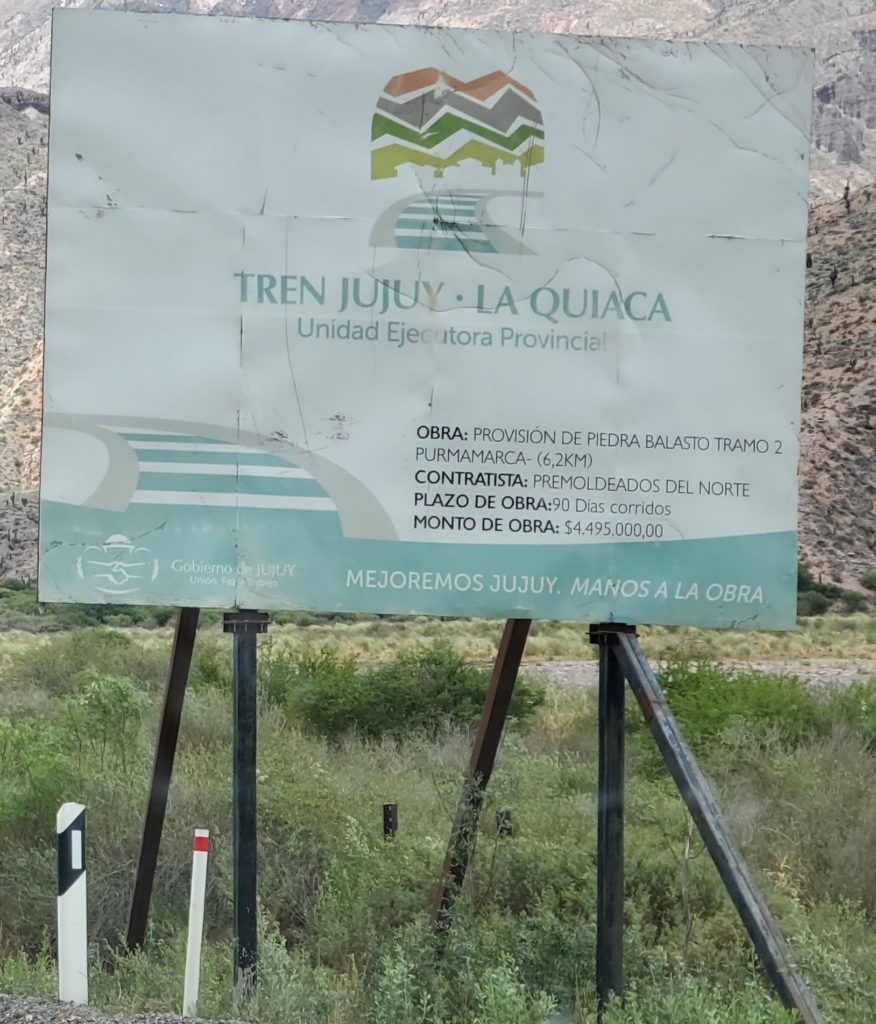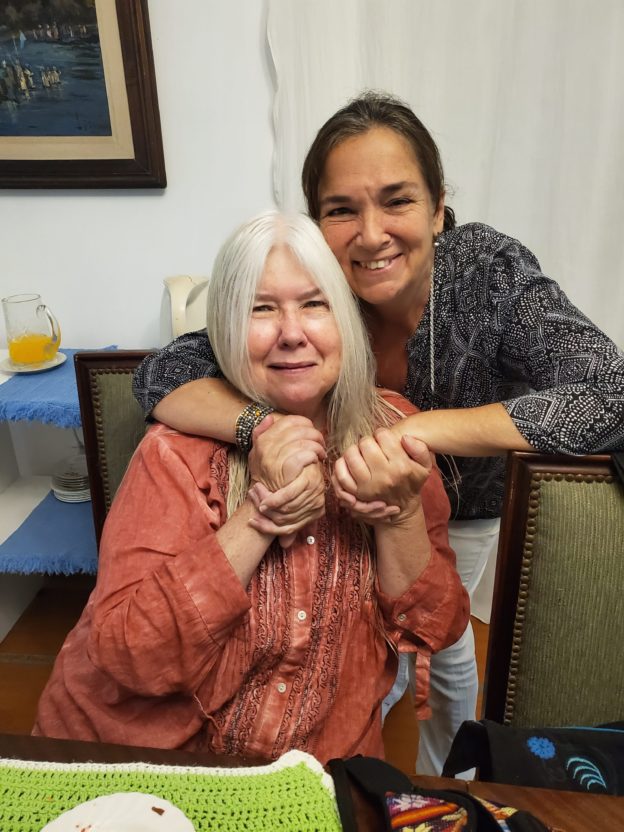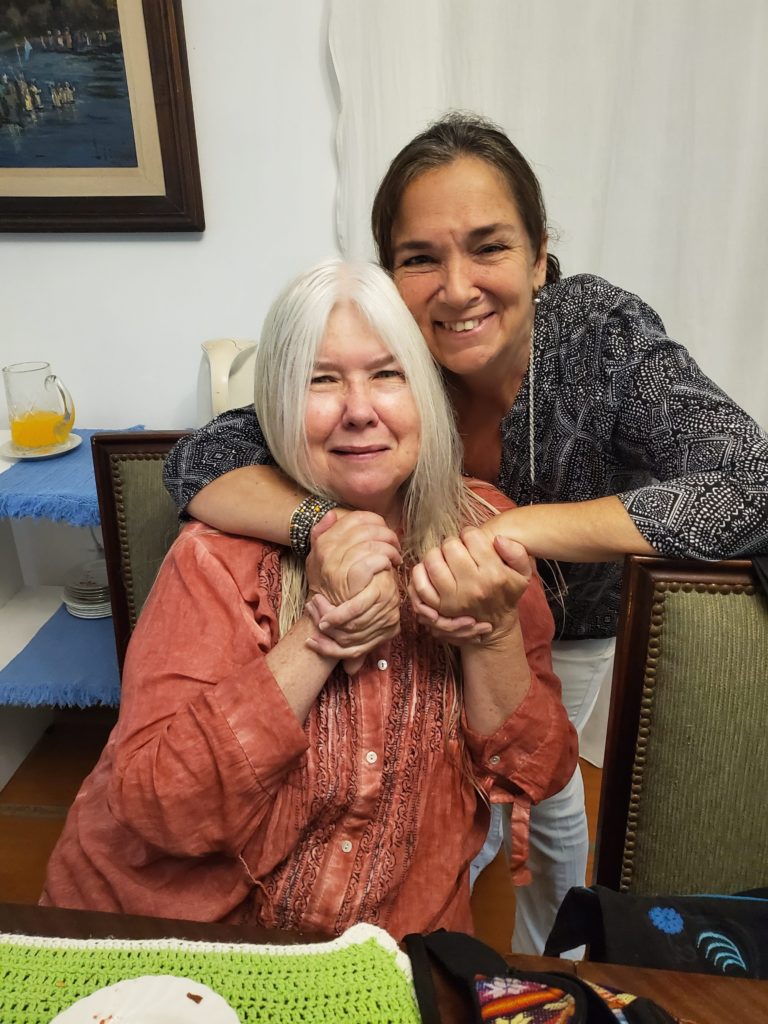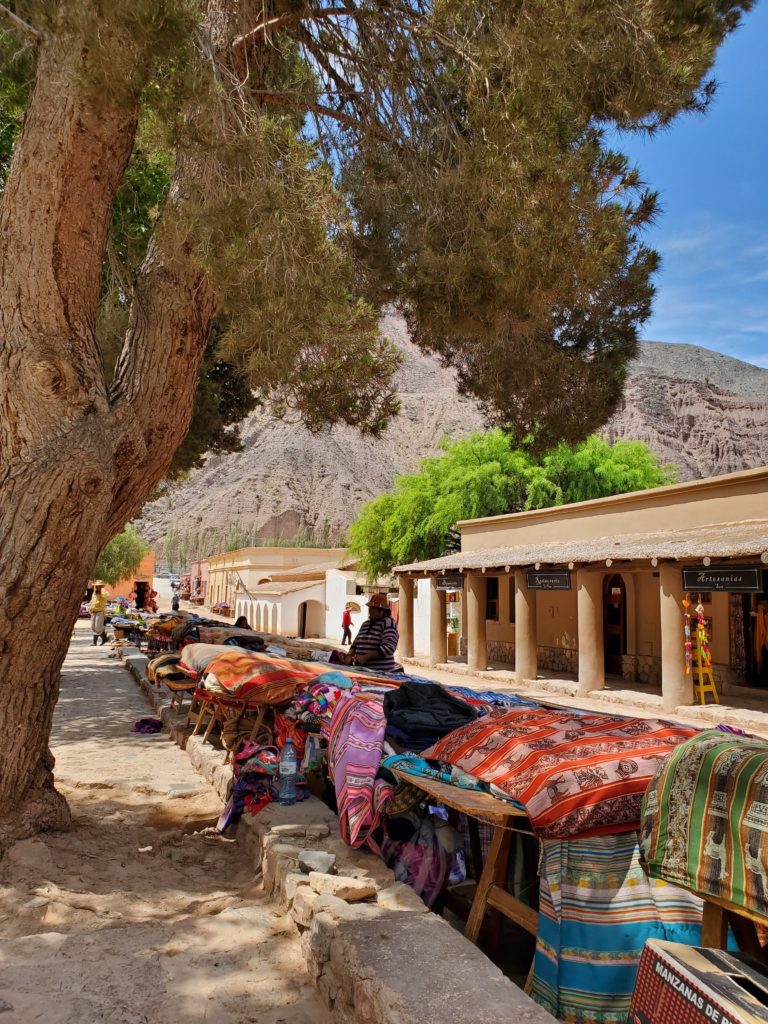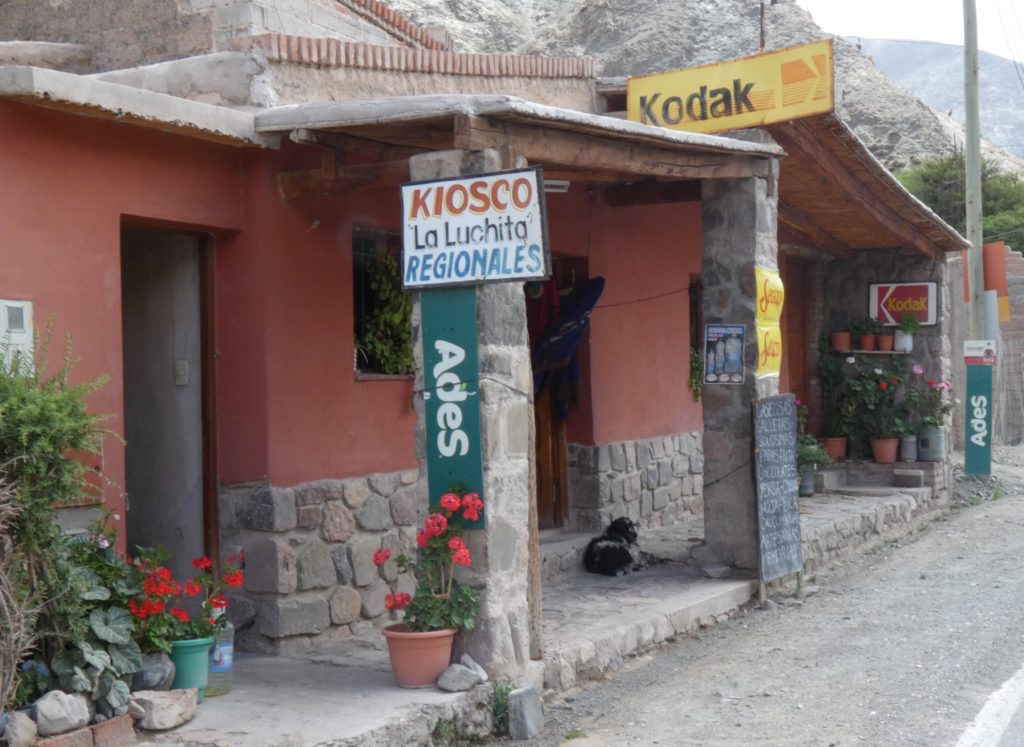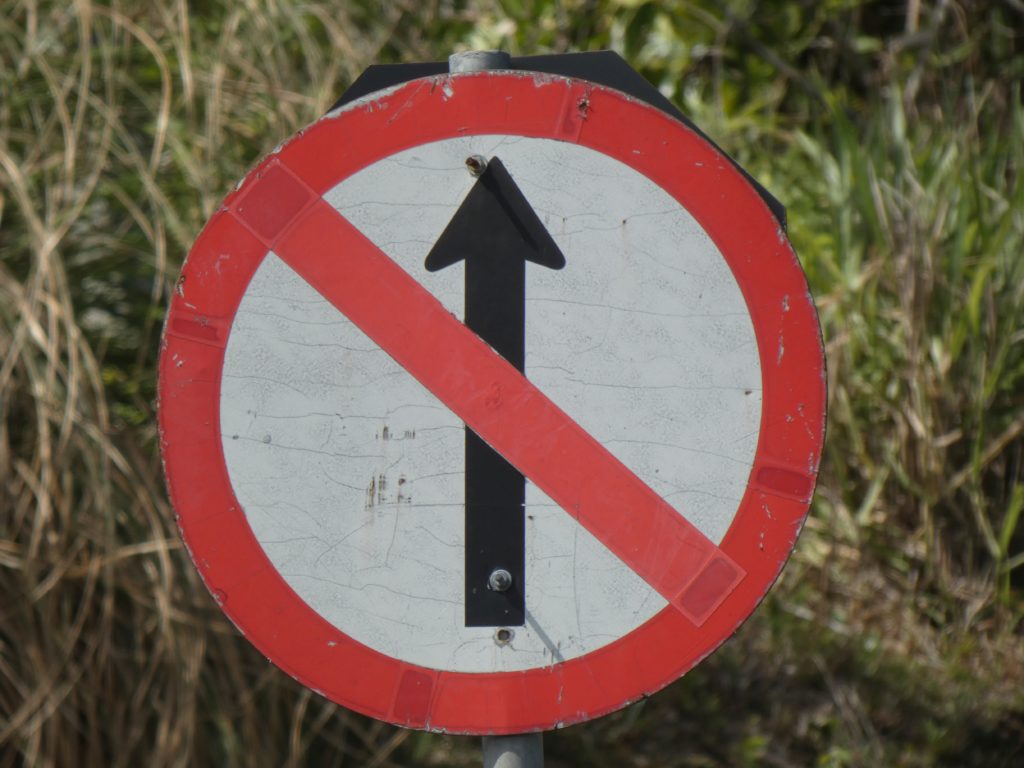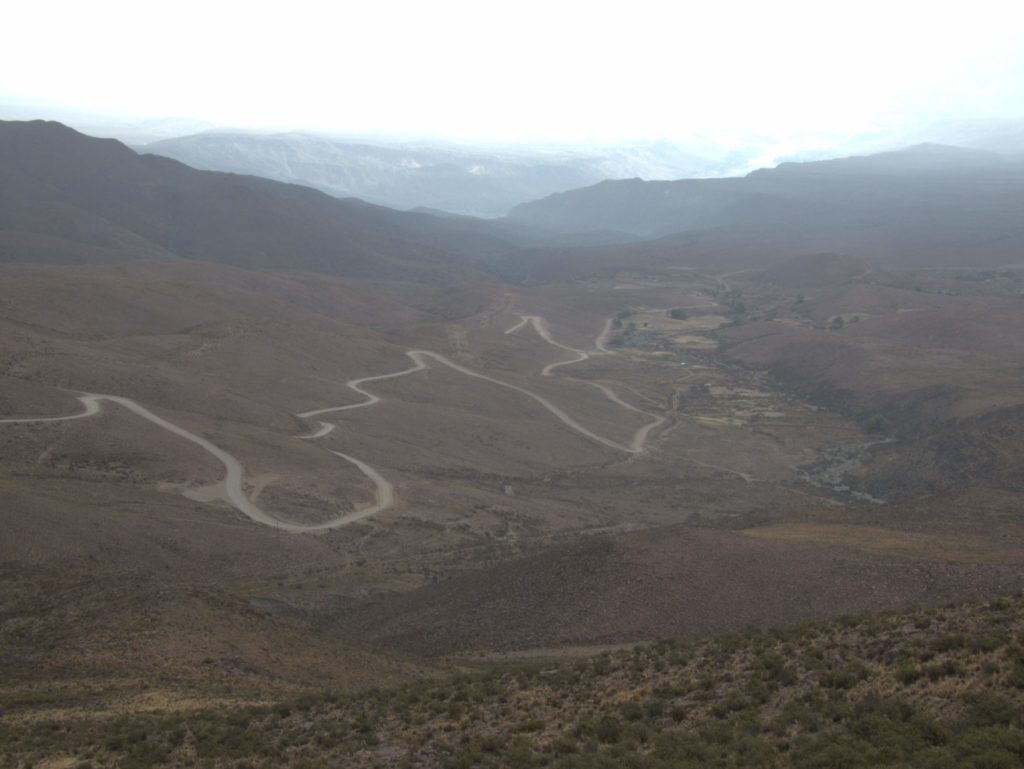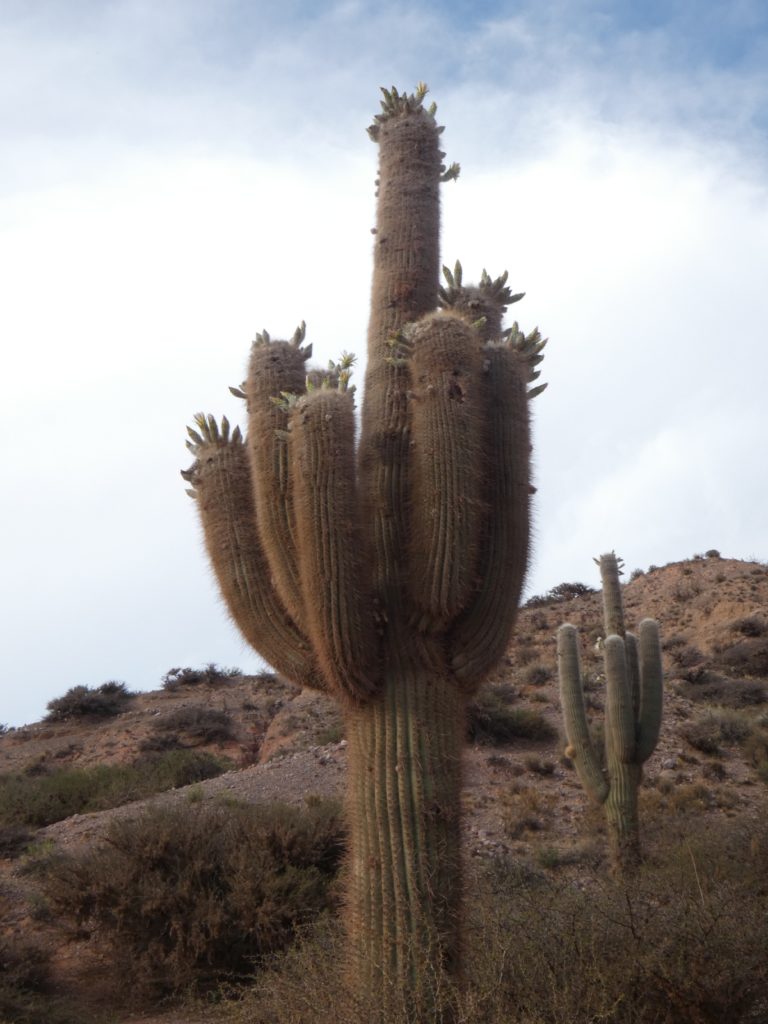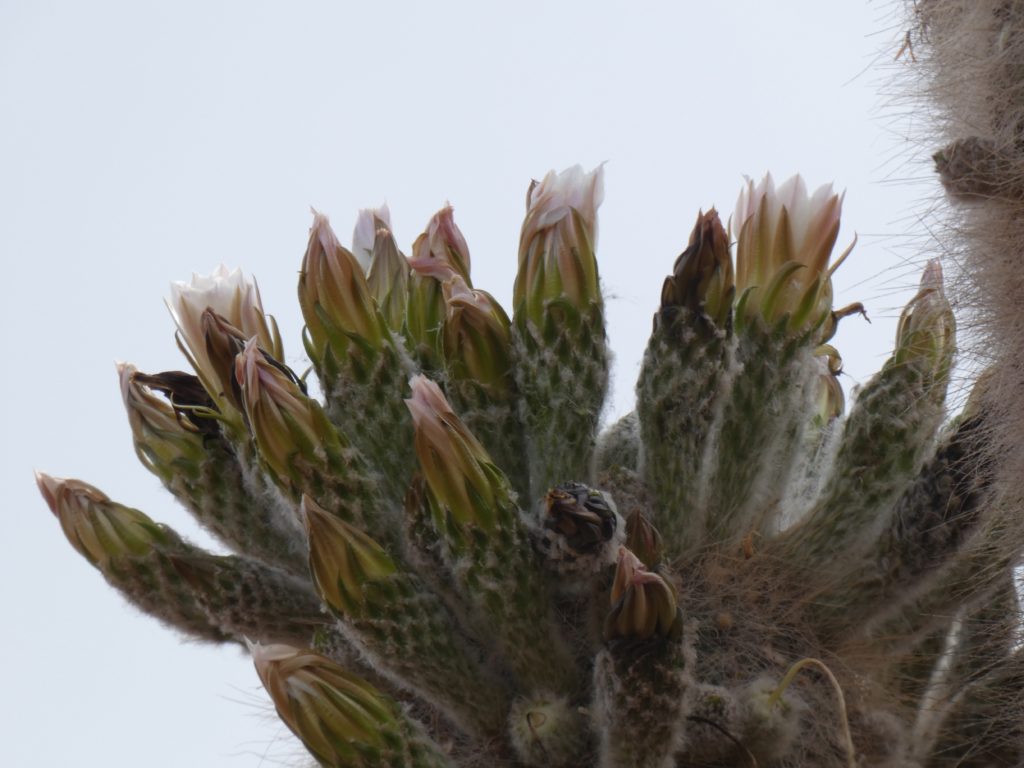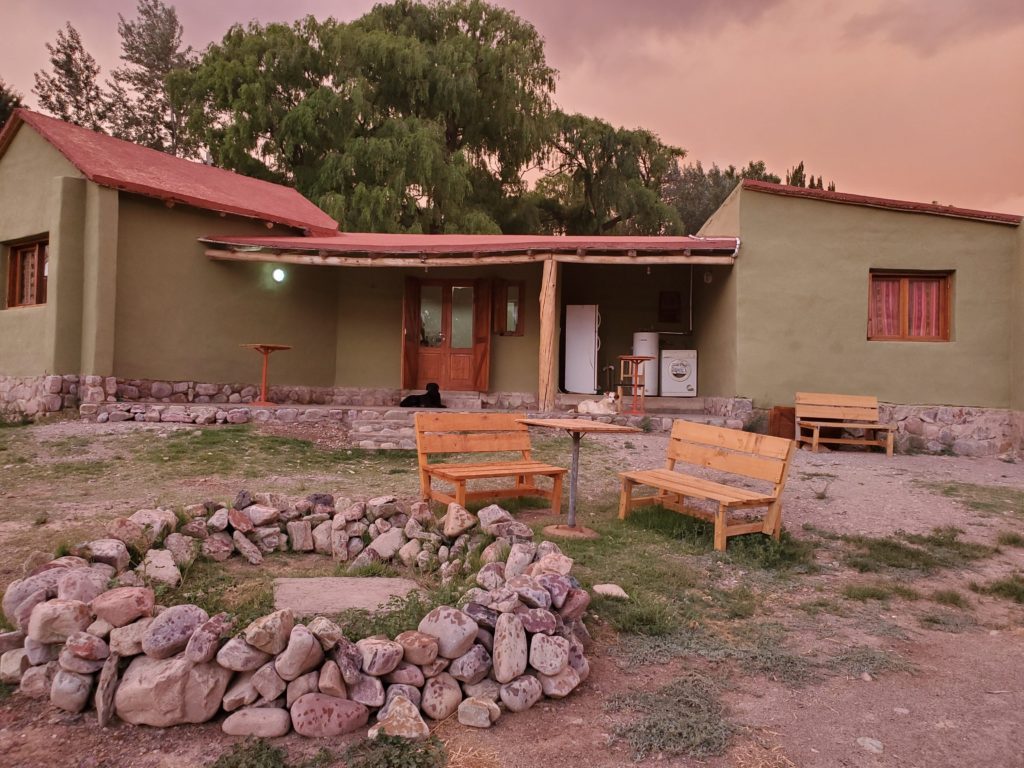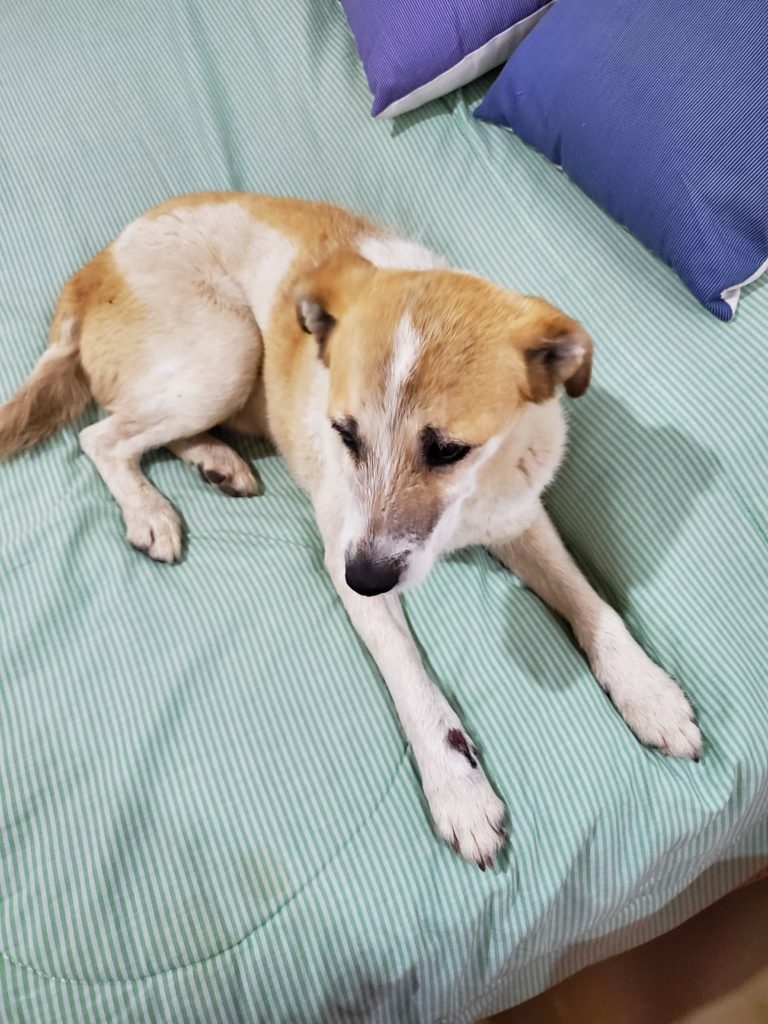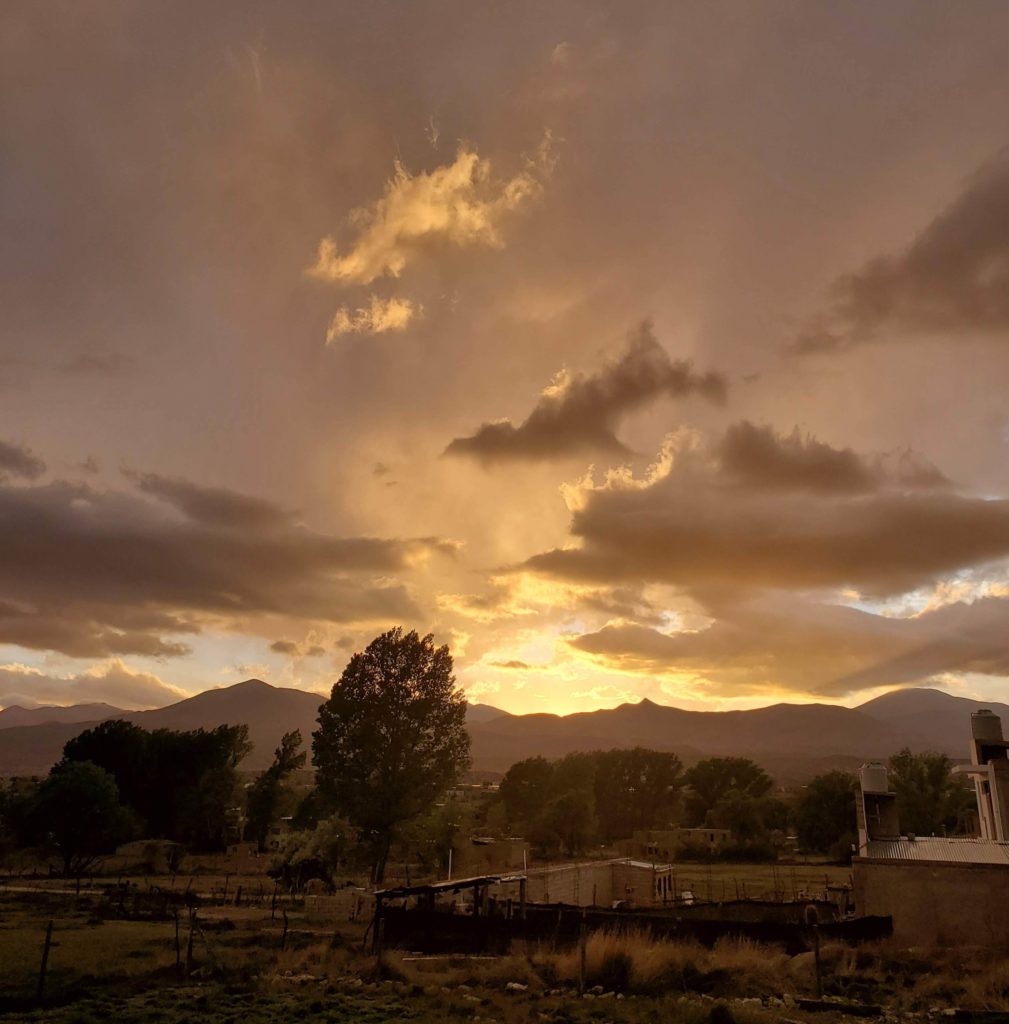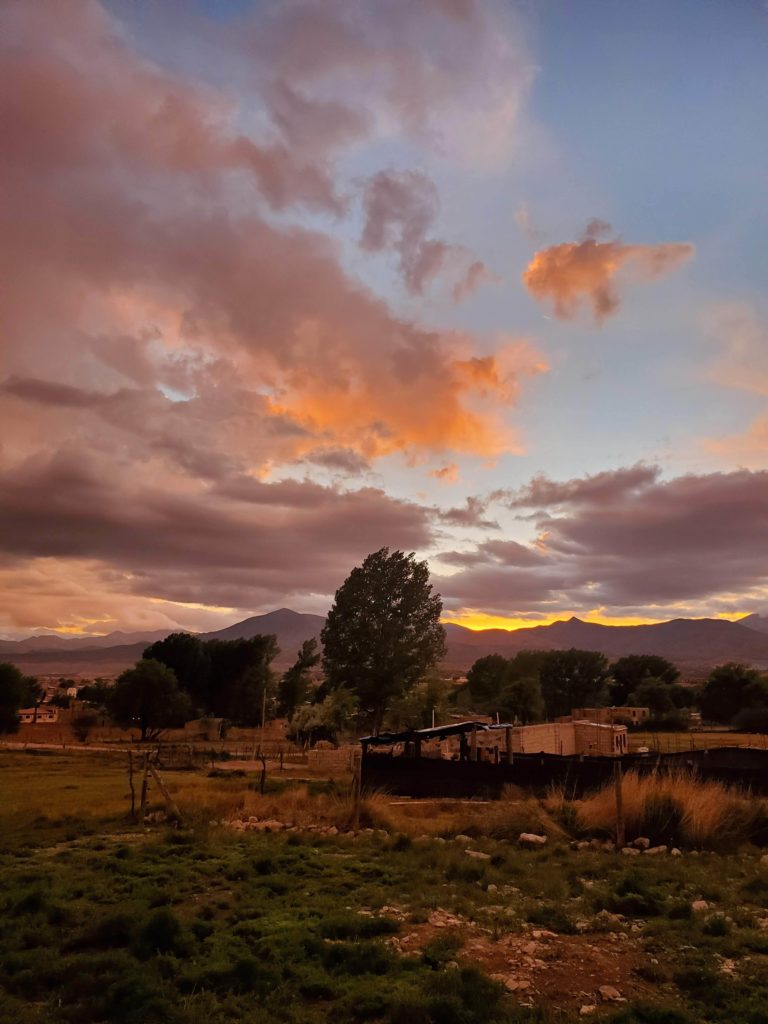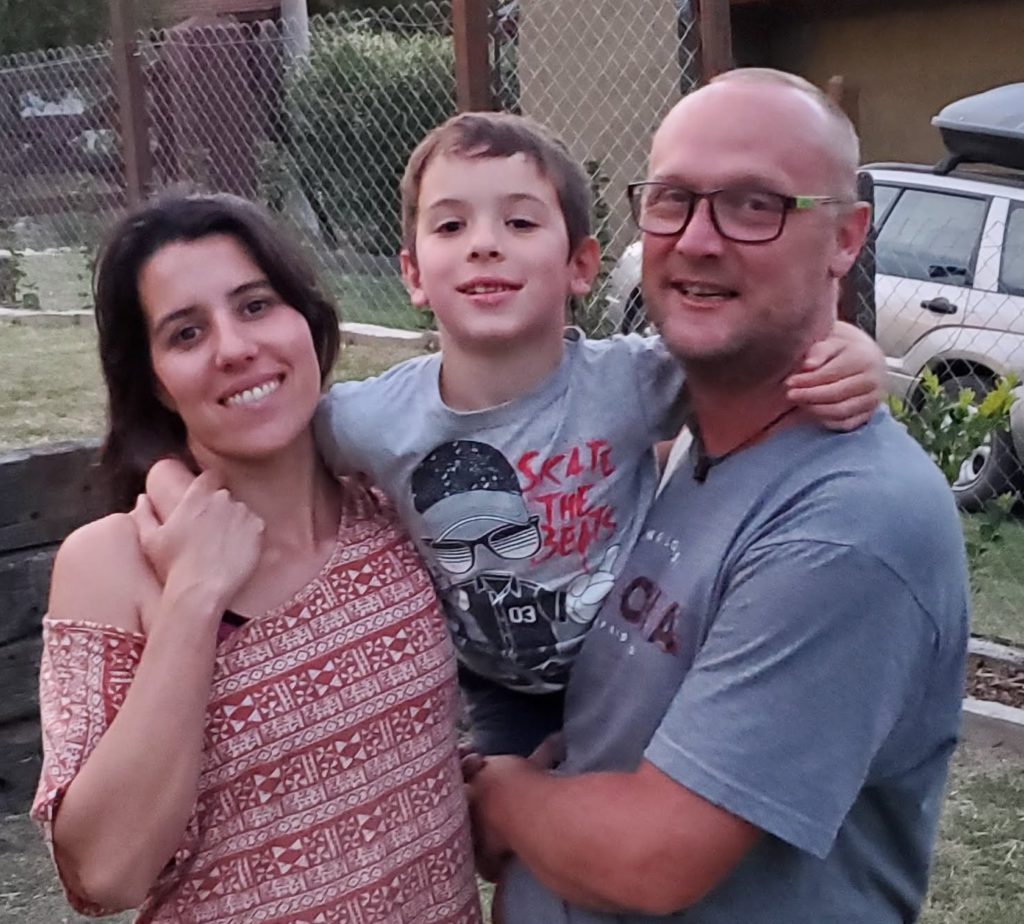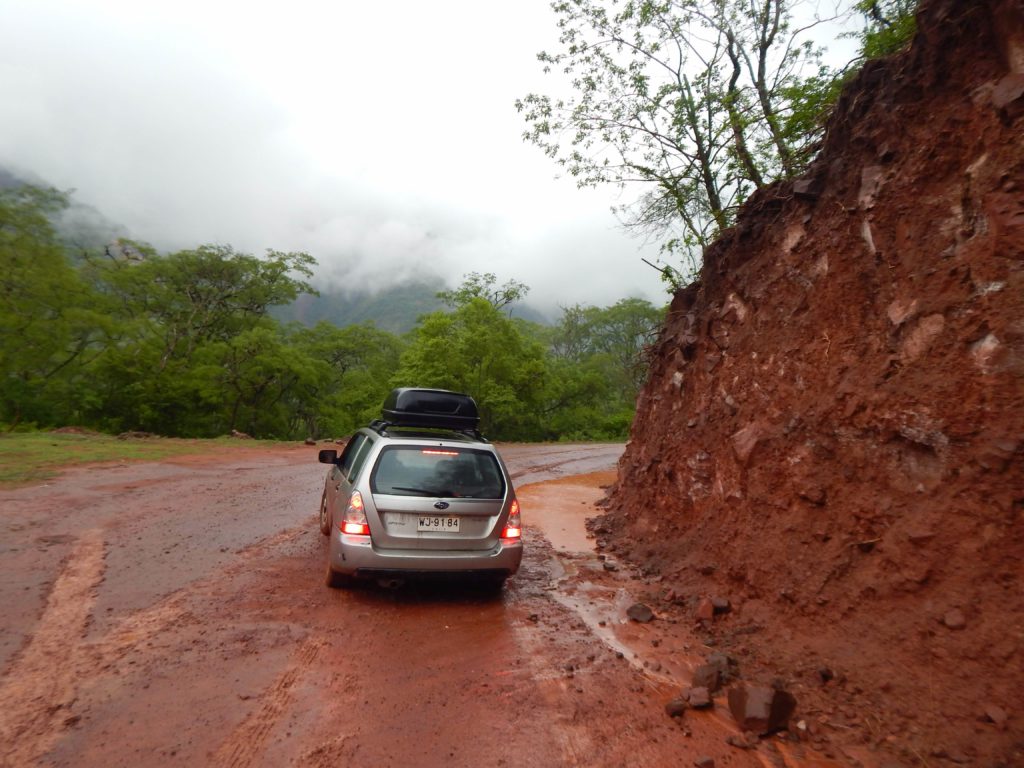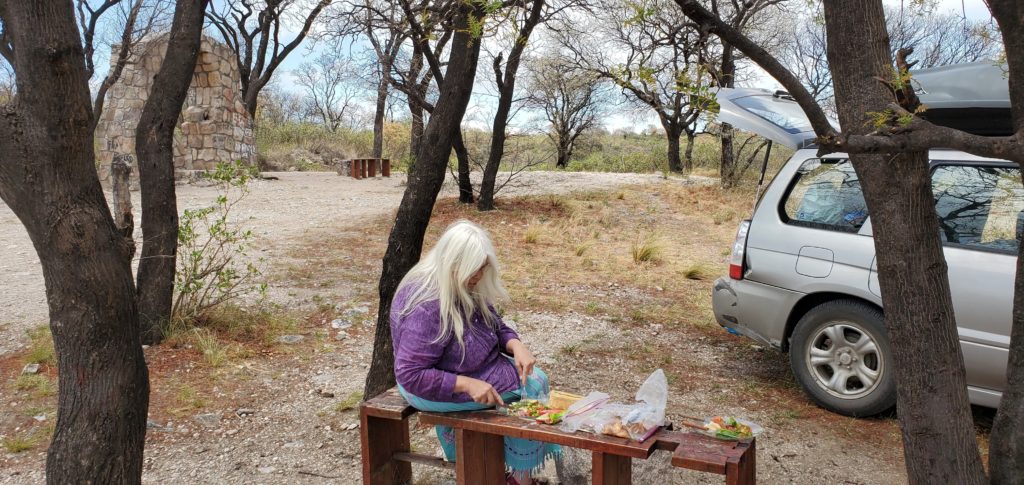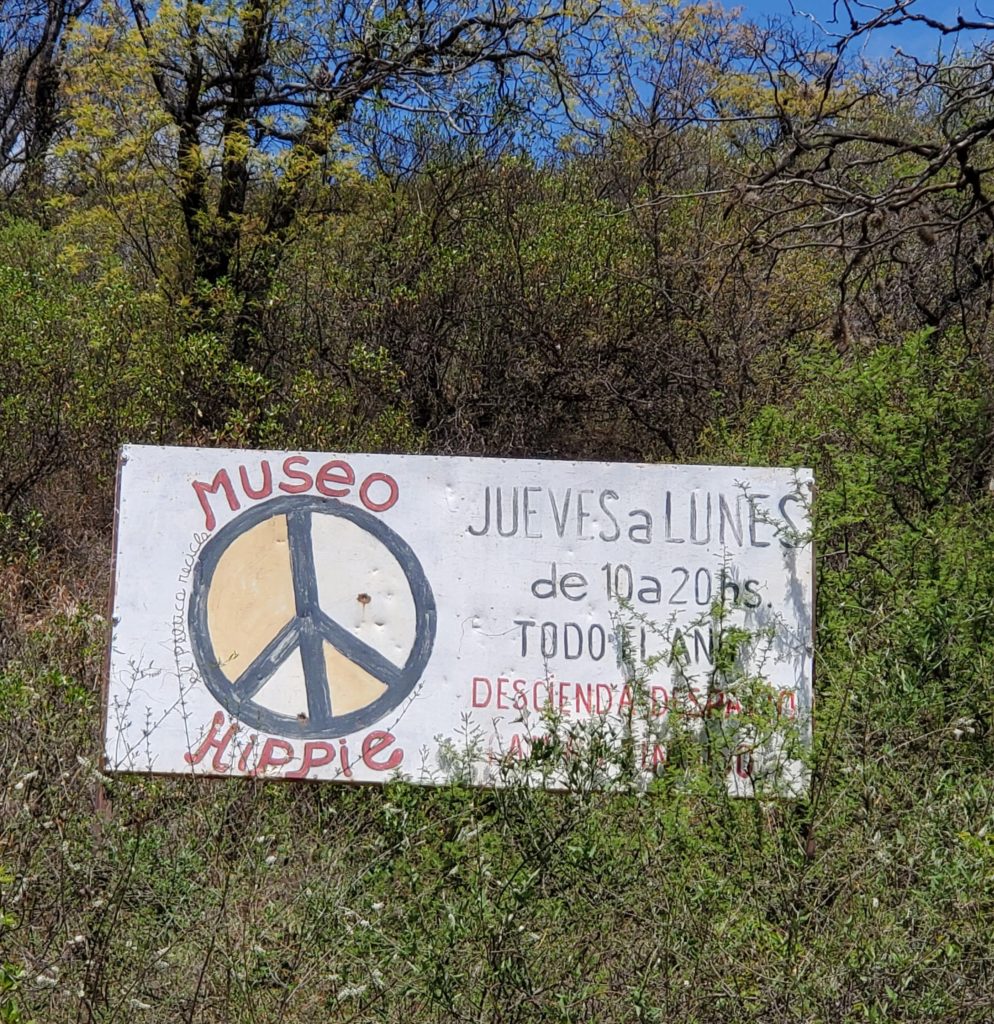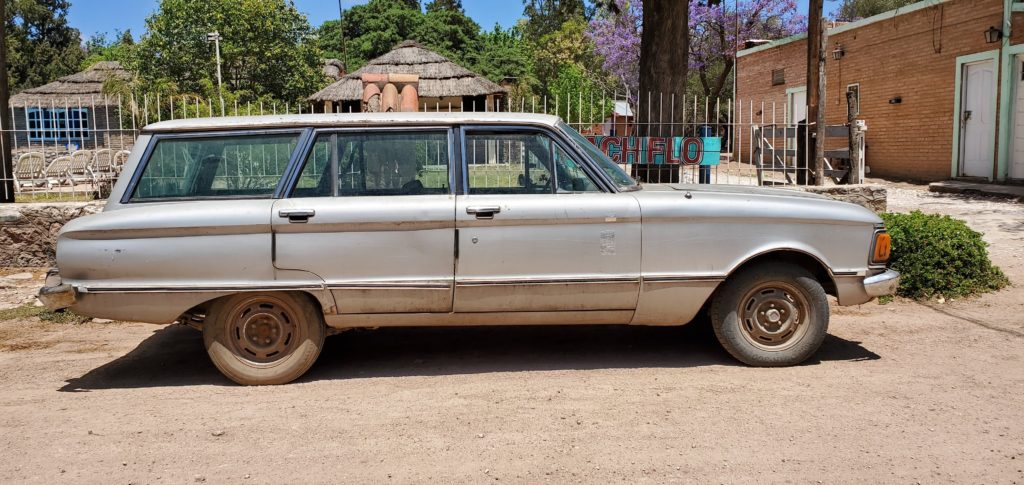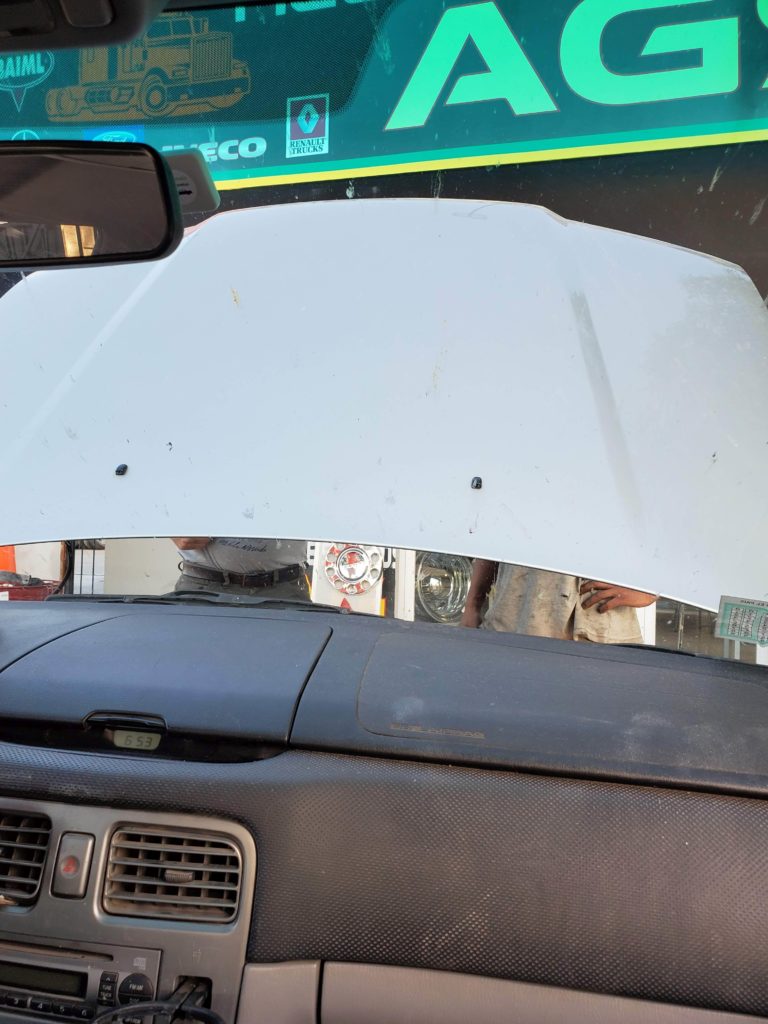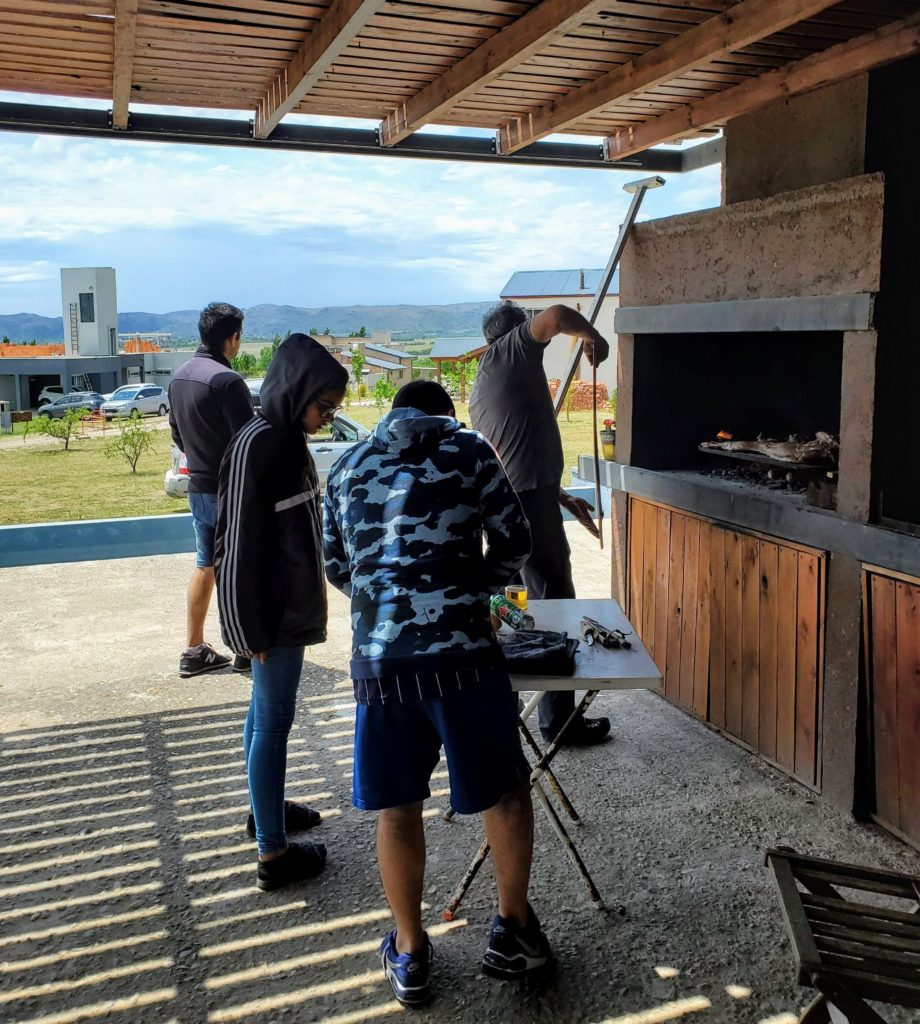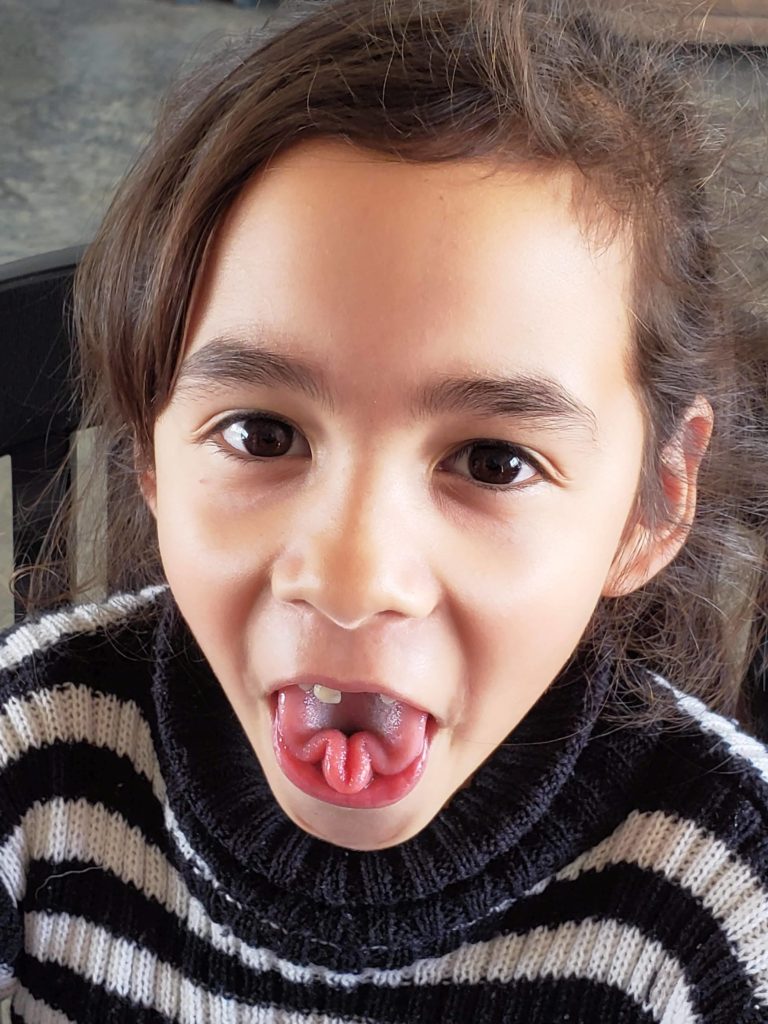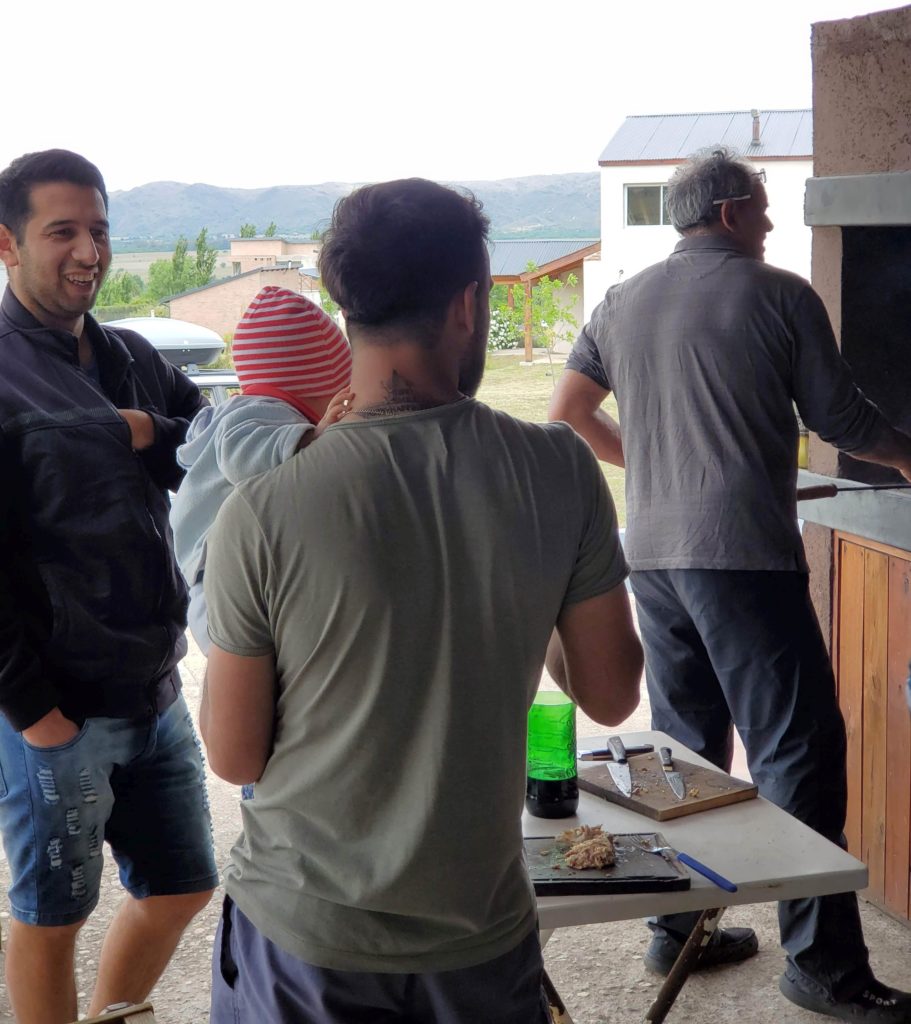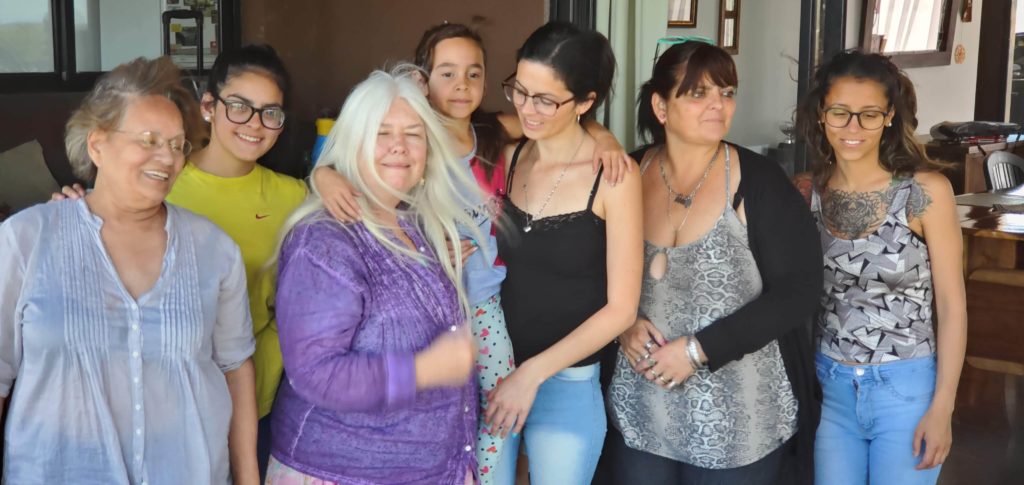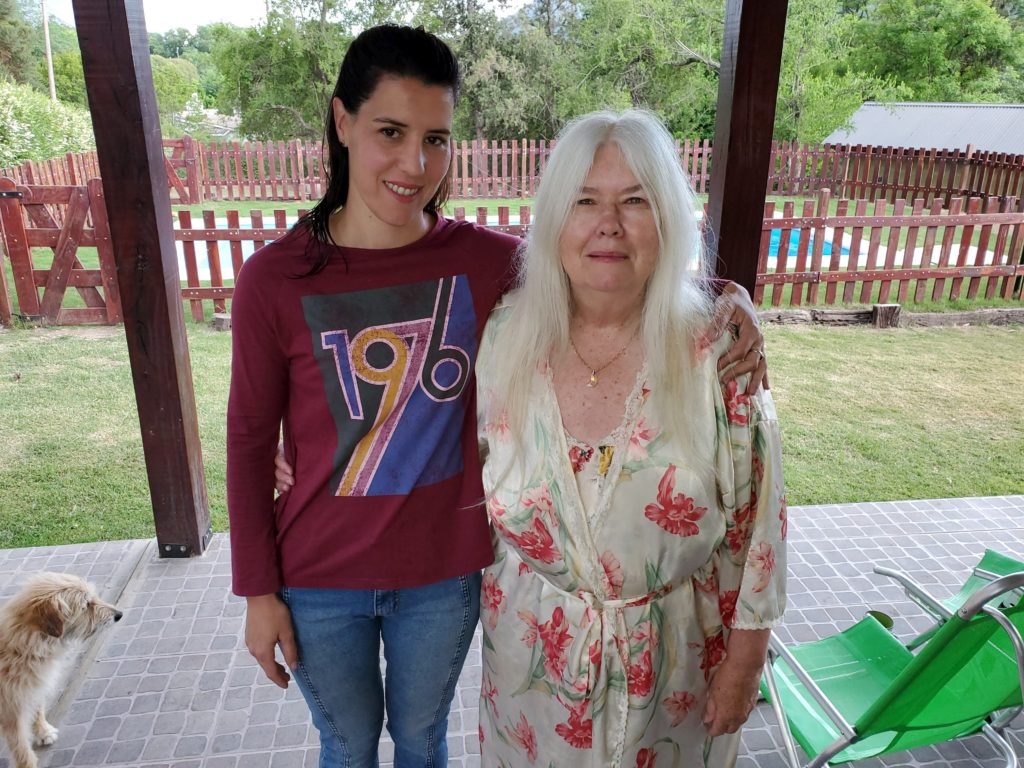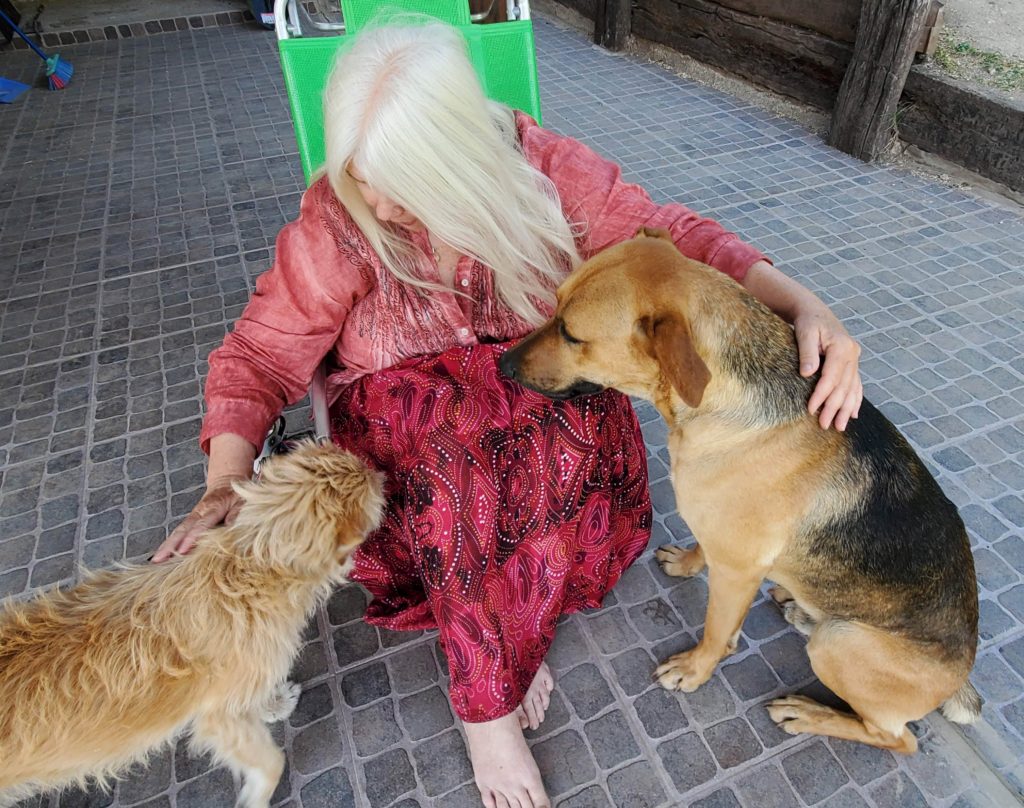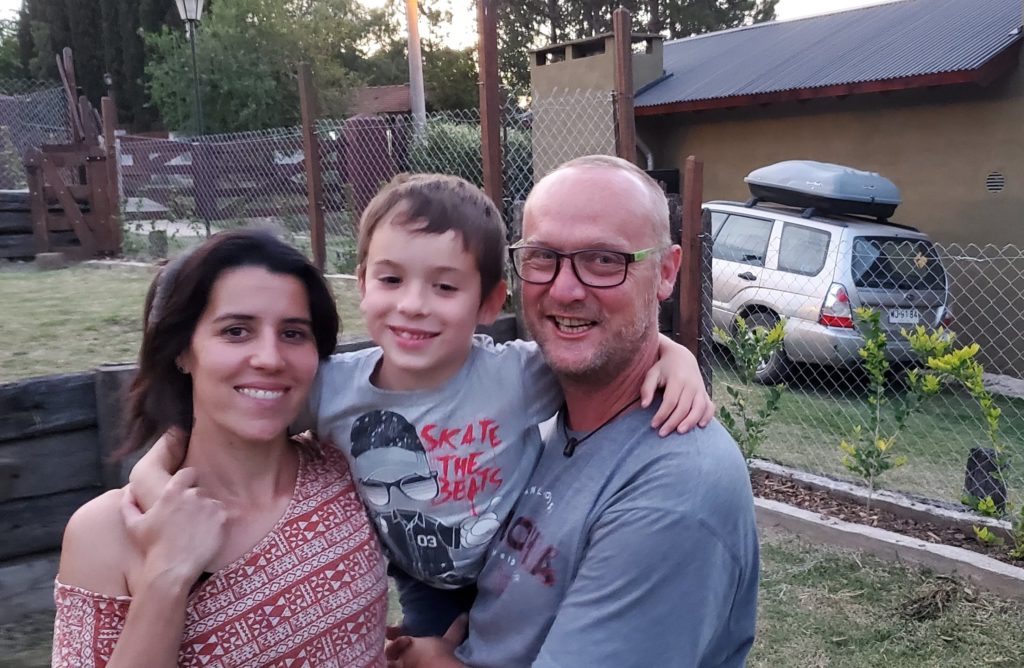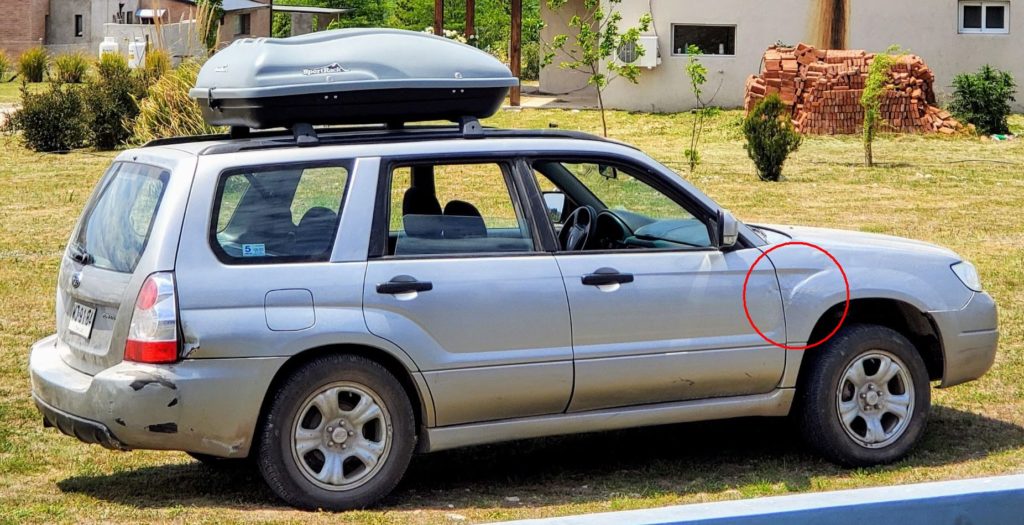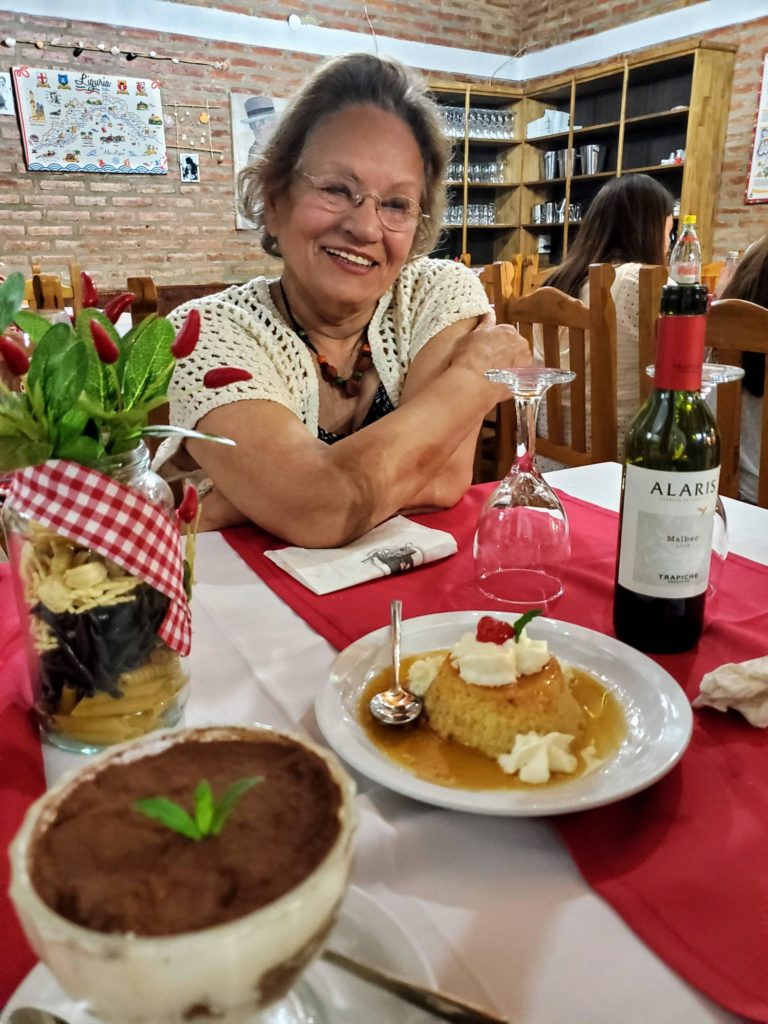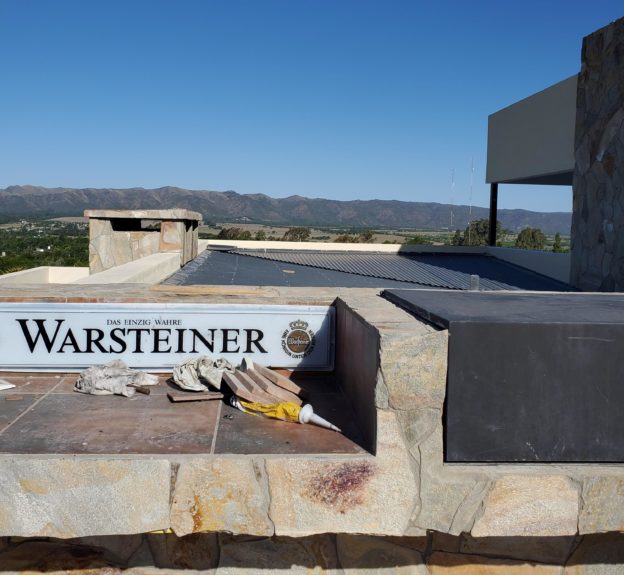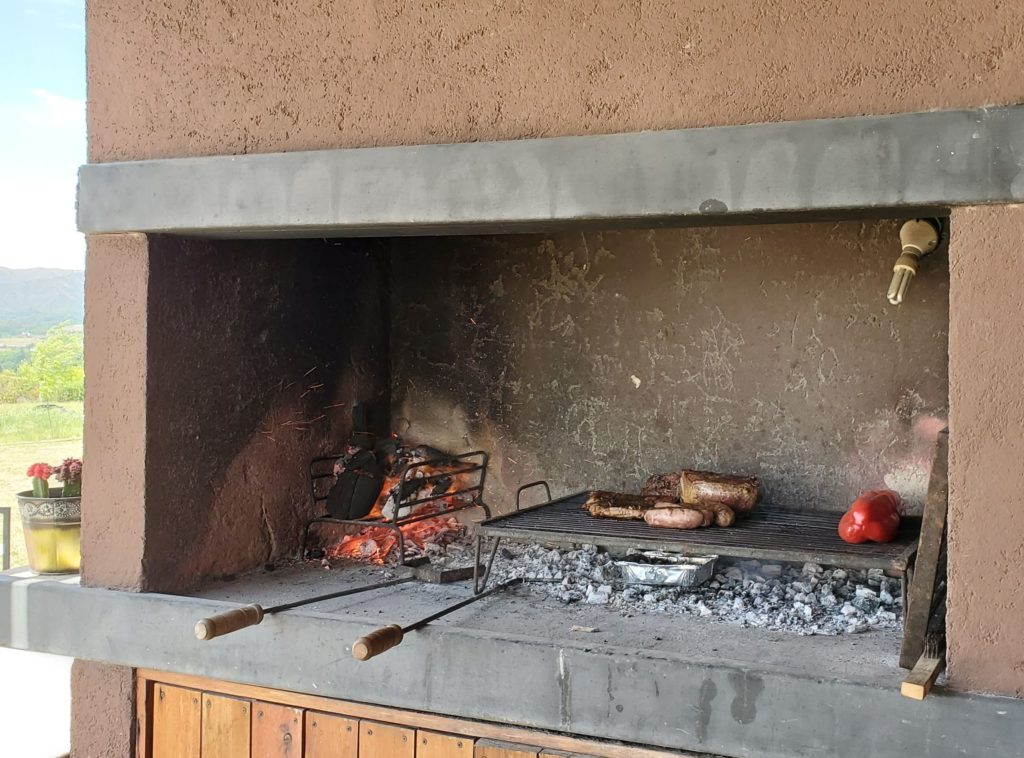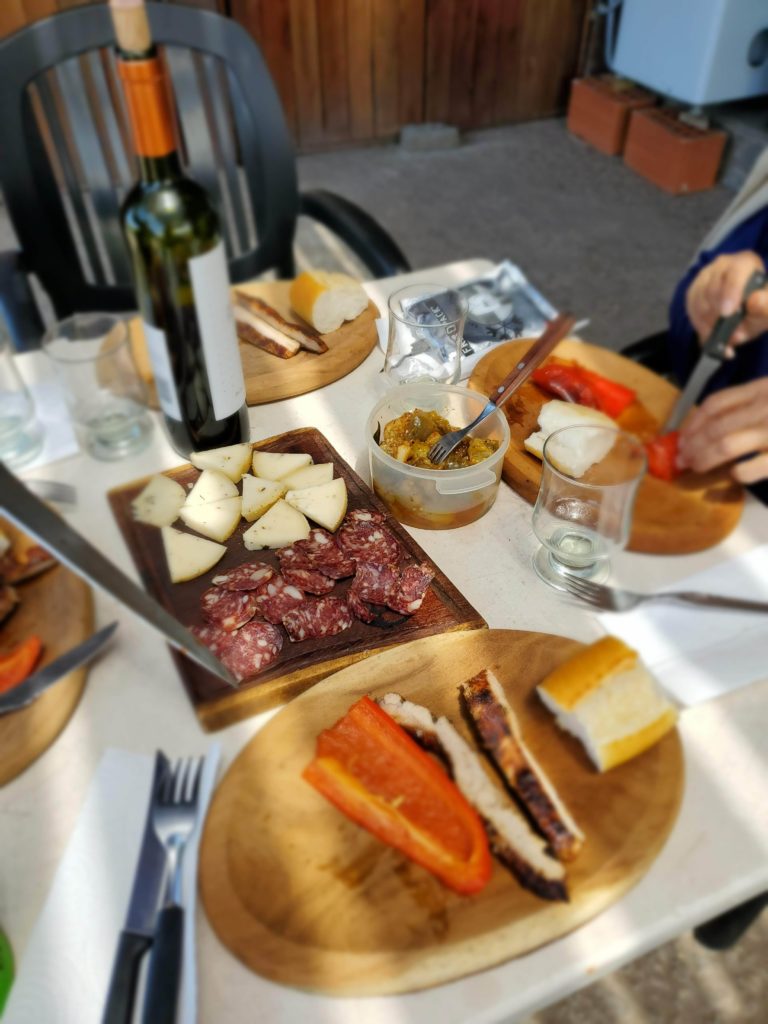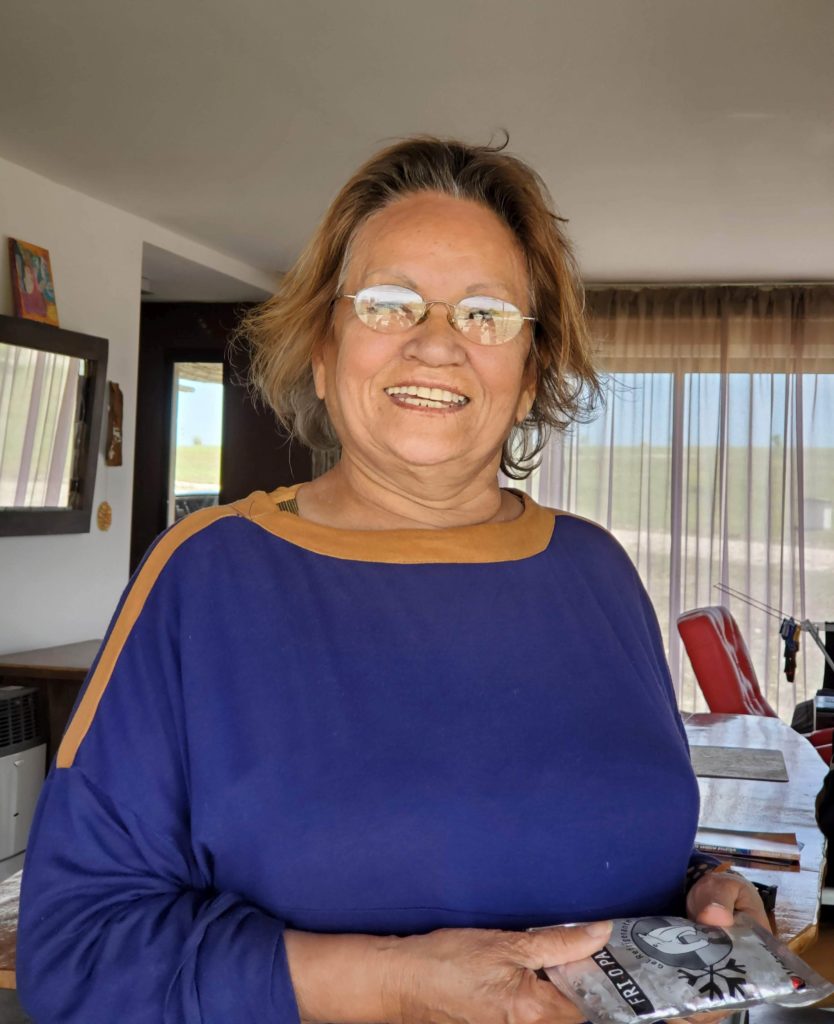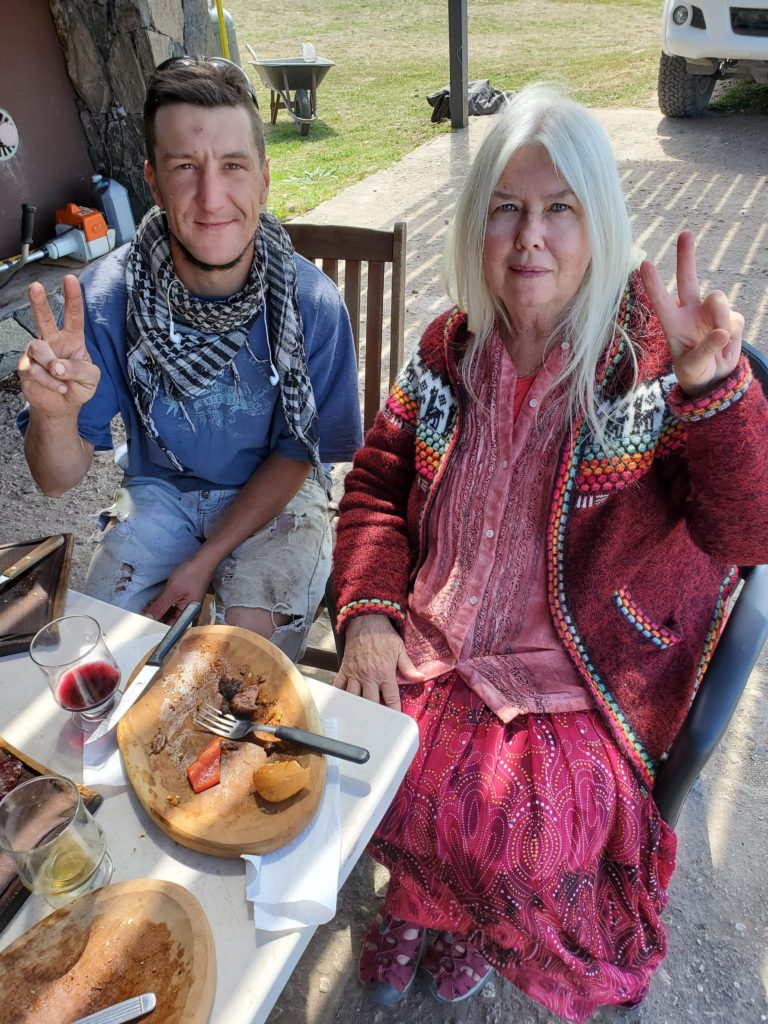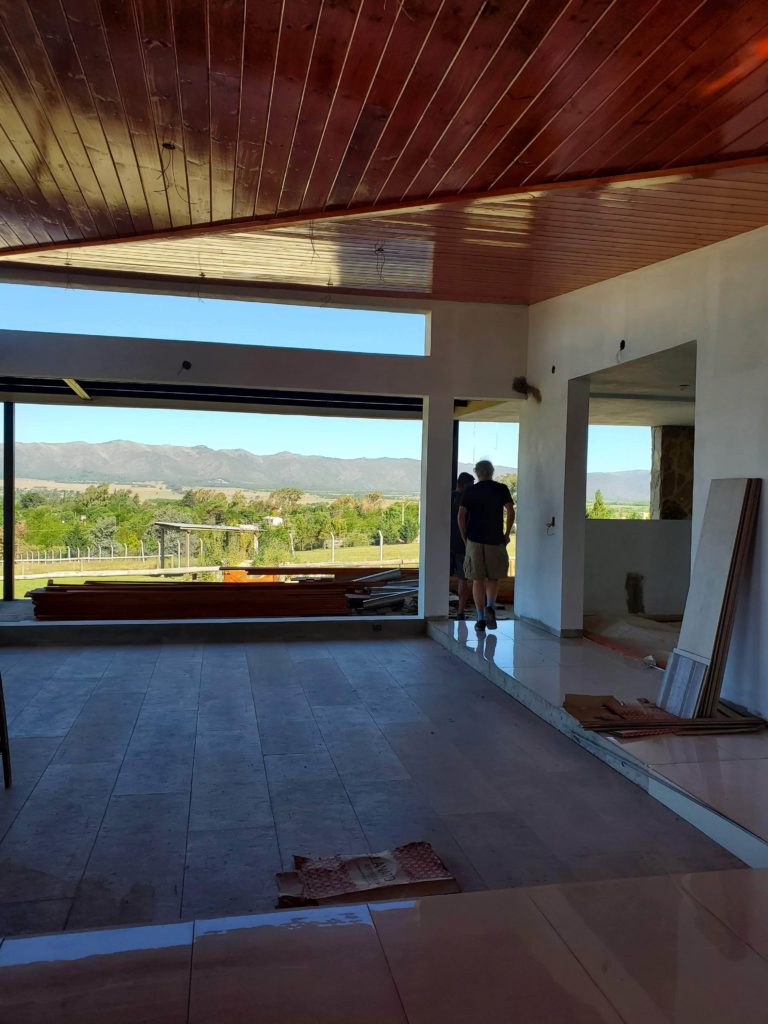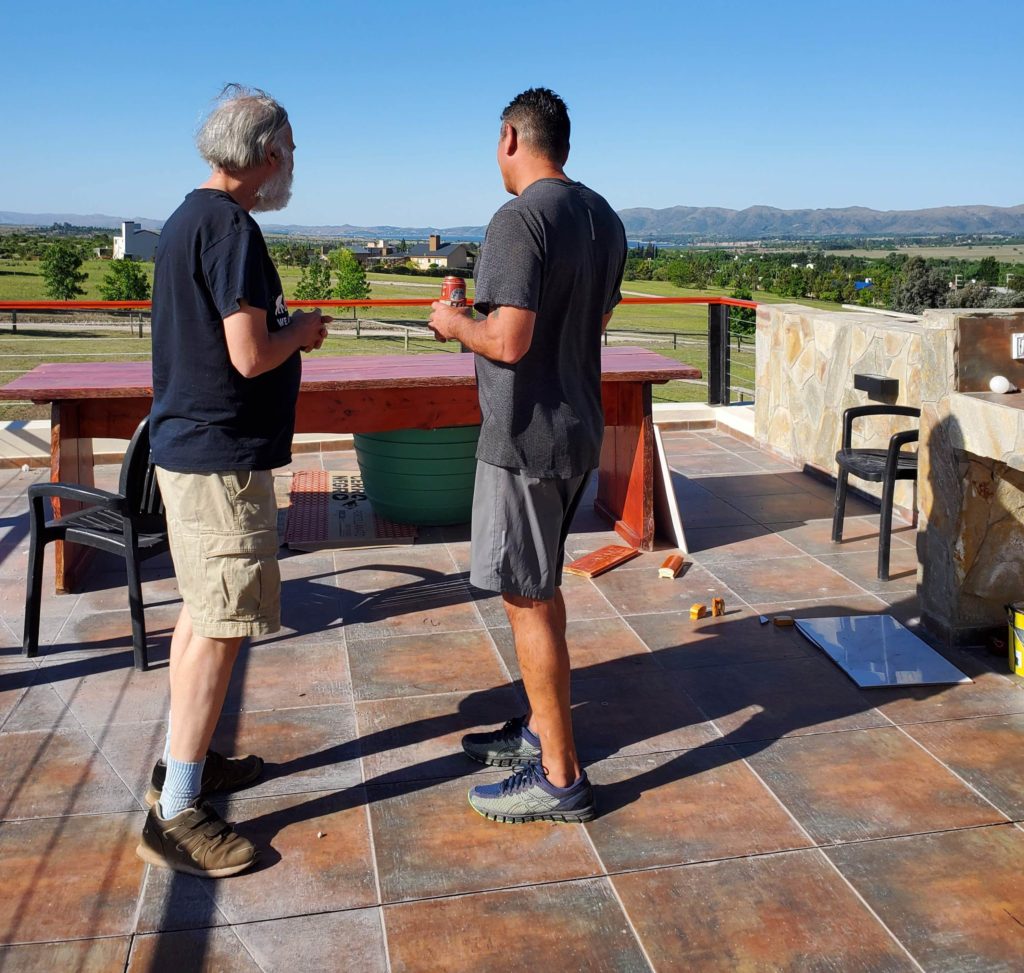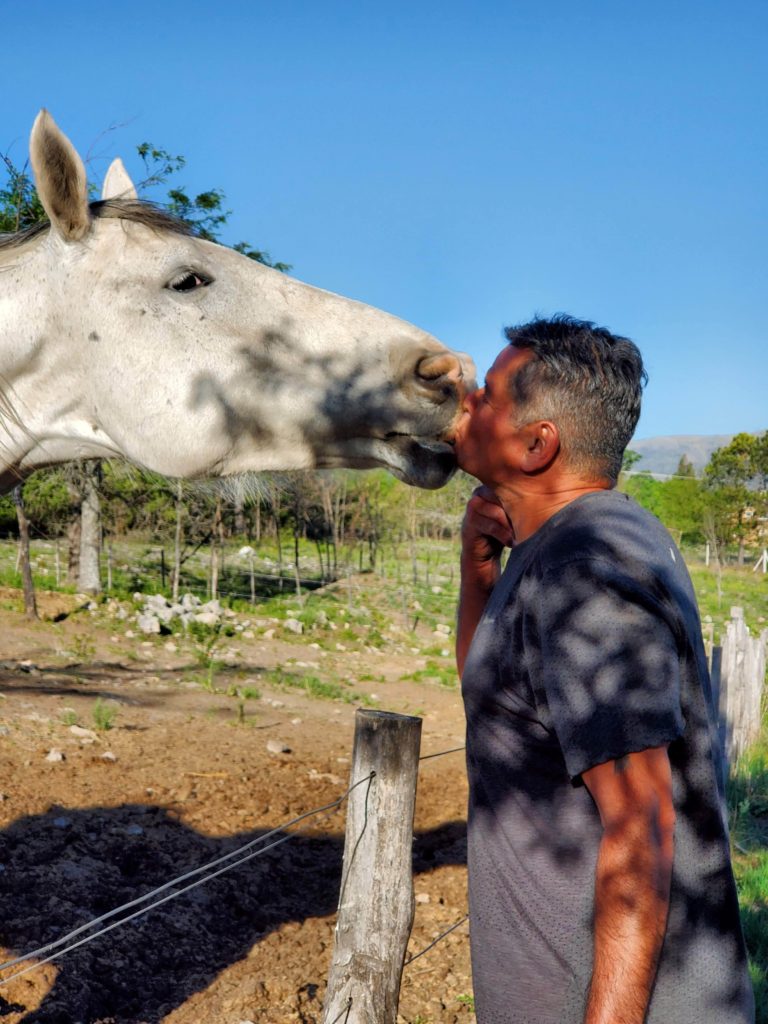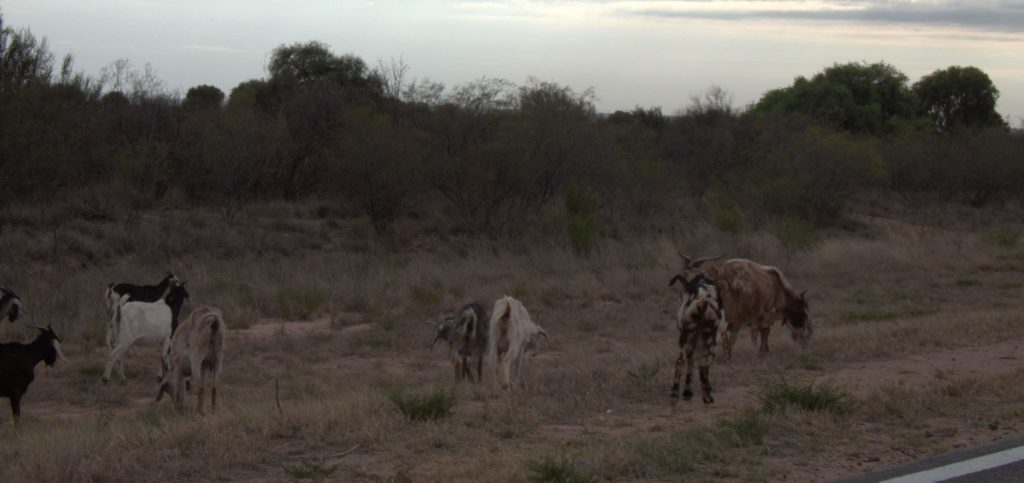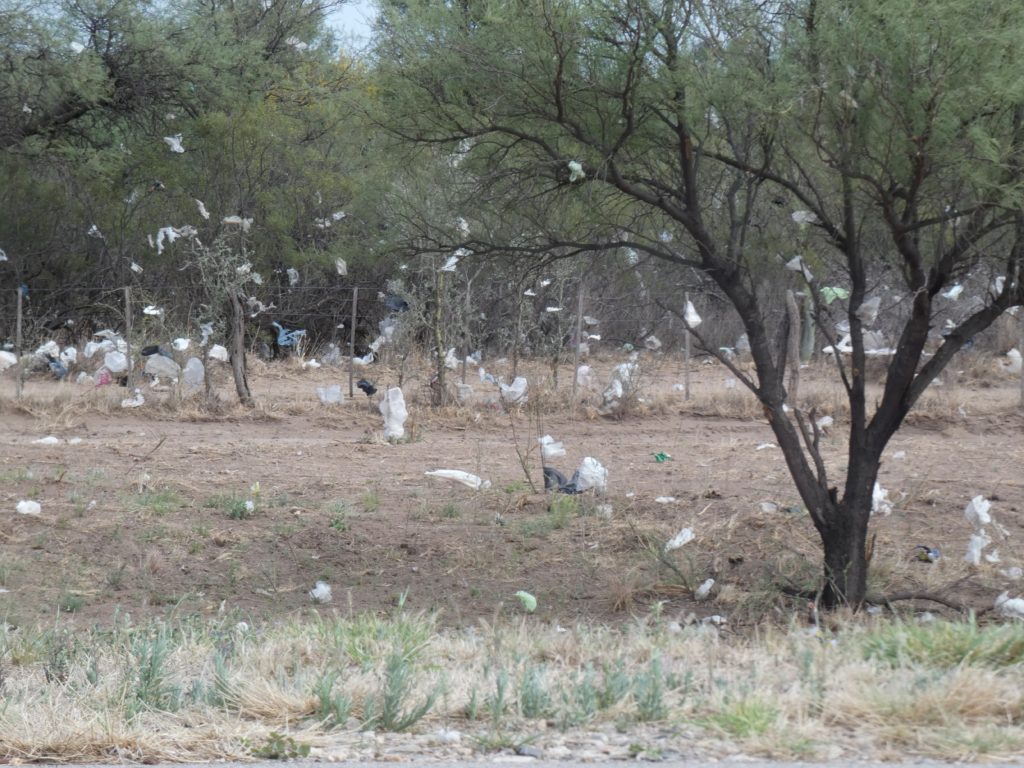[NOTE: To enlarge any image, right click it and choose “Open image in New Tab” or similar.
Prior post: http://blog.bucksvsbytes.com/2020/01/21/south-america-by-subaru-19-11-08-back-to-santa-rosa/
We get up fairly early for breakfast at our poor value hotel in Poconé, Pousada Haras Santa Rita. It’s a big spread, well maintained, built on a reclaimed strip mine, but almost deserted this time of year. The staff seem to outnumber the few guests and despite the many stables, rodeo ring, and other facilities that make it very horse-oriented . there’s not one horse to be seen.

The church-size chapel seems incongruous for a hotel, so I assume the owners are devout believers. It (the hotel, not the chapel) does, however, have a giant swimming pool which is what attracted Susan. Their breakfast, we both agree, is pretty elaborate but with nothing very tasty. We eat as much as we can manage because we’re heading south today, about 100 miles of remote road to the end in Porto Jofre, the access point to the northern Pantanal swamp.
We’re into the beginning of the wet season, which admittedly is not the right time to visit. During the April – September dry season the animals are forced to concentrate themselves at water holes and river banks, making it a world class locale for viewing jaguar, anaconda, giant otter. and birds galore. But, we’re here now and we’re likely not coming back, so we’re going to see what we can see, recommendations be damned.
We head into nearby Poconé, the gateway town to the Transpantaneira highway.

Before leaving Poconé, we try to replenish our supply of local currency. Brasil is incredibly credit card friendly — even many street kiosks accept them — so we haven’t used a lot of Brasilian reais (pronounced approximately “hey-ICE”) in our first seven weeks.
Brasil has experienced several eras of hyperinflation since the Great Depression and has repeatedly changed its currency as the old one became impossibly unwieldy, When I traveled here in 1984, the currency was the New Cruzeiro and inflation was running rampant. One of my enduring memories from that trip was television and print ads constantly shouting “Sem Juros! Sem acrescimento!” (“No interest! No fees!”) to entice consumers into buying cars and major appliances with their shrinking earnings. Inflation is currently very modest and the current Real (Royal) is the fifth currency since I was last here. The average annual inflation rate has been about 60% over the last 90 years. That makes one current Real worth an astounding 2.75 quintillion 1929 Reals. Contrary to the puny examples we were given in math or finance class, that example shows the real power of compound interest!
Today, we’re running low on currency and heading into a remote area, so it’s time to take on the system. Curiously, many bank ATMs don’t accept international debit cards, even ATMs of the largest, and government- controlled, Banco do Brasil. Having never encountered this problem in any other nation, the series of rejections caused us considerable consternation on our first day in the country. My son, Eric, who entered Brasil before we did, advised me that ATMs in stores and gas stations freely dispense cash to all comers — even when those ATMs carry the same bank names that reject cards at their own machines.
In Poconé, unfortunately, there appear to be no store-based ATMs, so I dutifully hit all four banks in town and get “Invalid card” responses from every one, sometimes after a sweltering wait on line in their non-air conditioned ATM lobbies. Next to one of the banks sits a depressed looking Santa Claus wishing, no doubt, for relief from alternating heat and rain. We have no choice but to head into the wild with our remaining currency and hope that credit cards will do the heavy lifting.
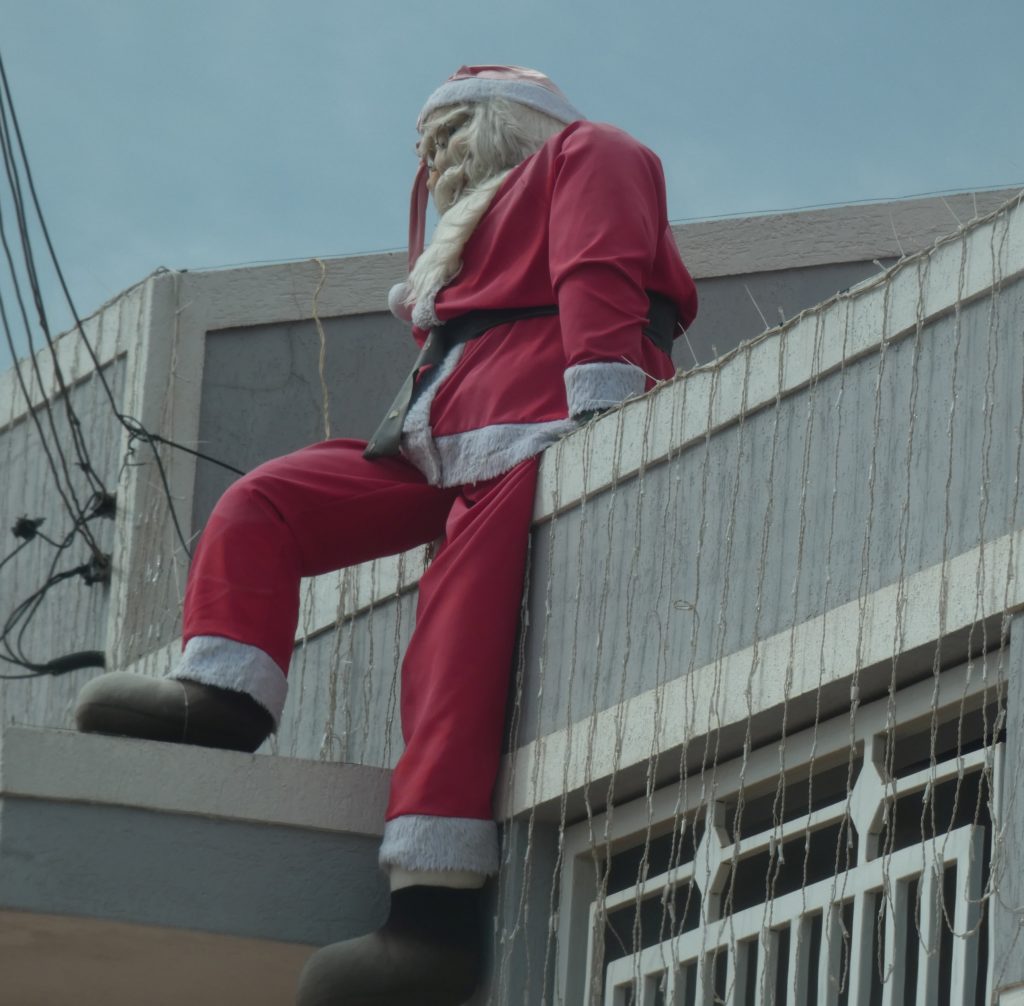
We fill the gas tank and head south. Not far from town the pavement ends as we knew it would and we’re driving on wide, well maintained gravel. The weather is dry and sunny, which is not at all assured this time of year, with very beautiful fluffy clouds, each of which is a potential rainstorm. At the ten mile mark, a large wooden arch declares “Start of the Trans-Pantanal Highway”
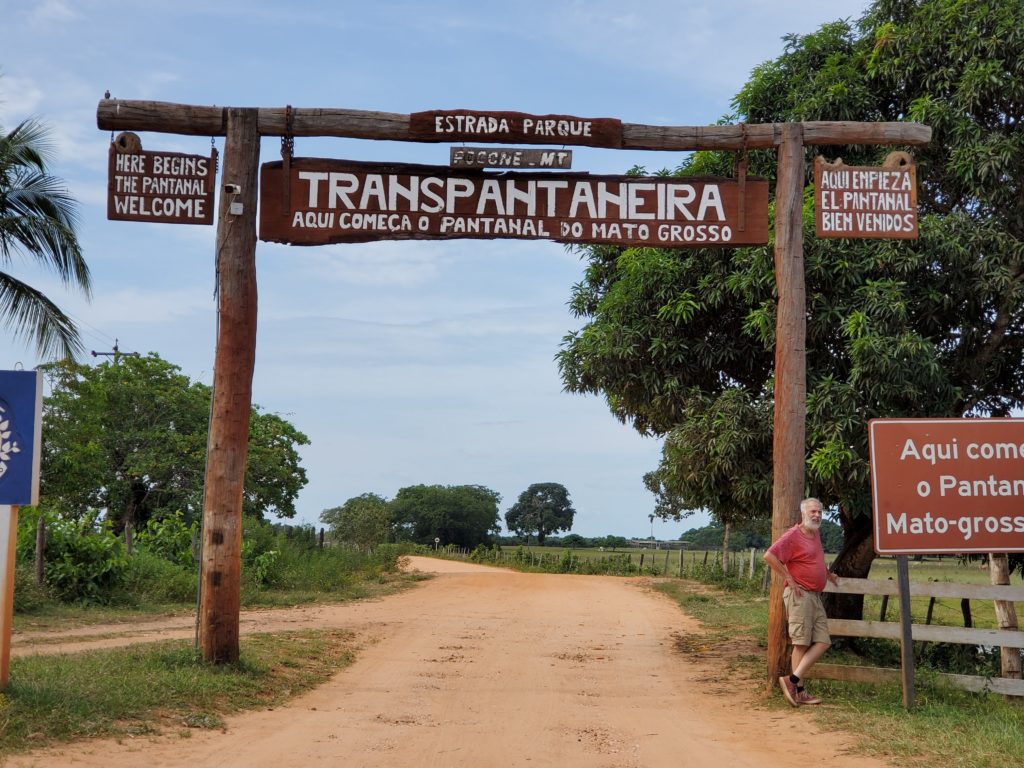
We stop for a moment and dutifully take photos of us under the sign, then proceed onward through very flat territory. There are wetlands to both sides of the road, interspersed with cattle ranches. Ahead of us is a large truck with high seating containing a small group of people on a wildlife viewing tour. This is encouraging because how bad can the road be if there are daily tours using it? We will eventually find the answer to that question.
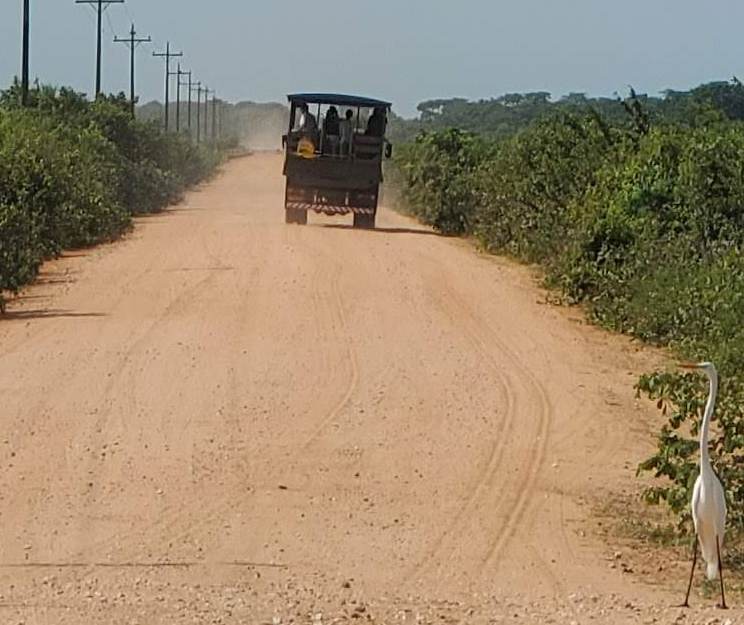
The only mammals we see from the road are capybaras (giant freaking aquatic guinea pigs).
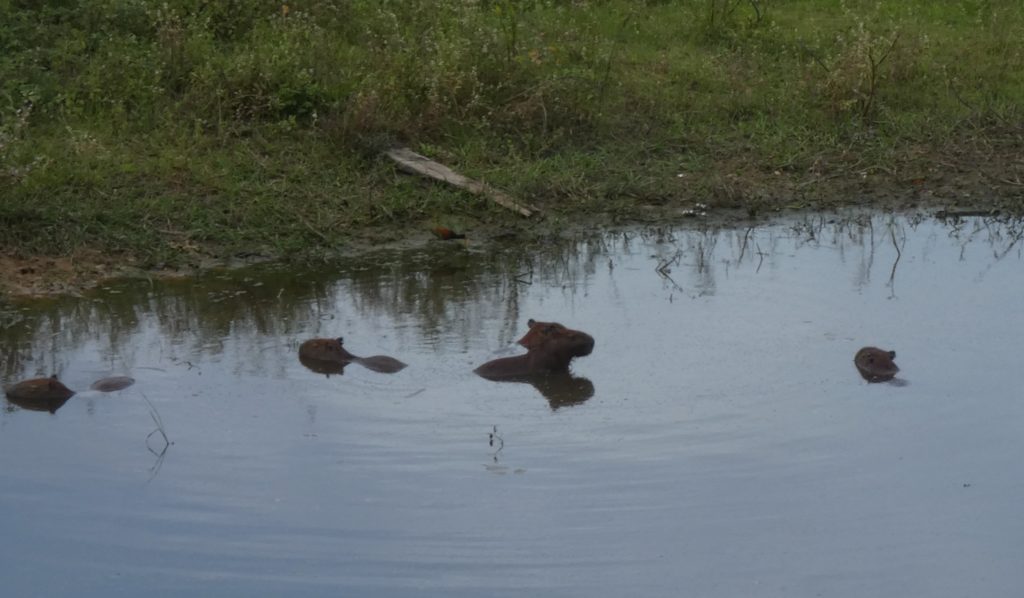
The swamp is filled with birds of all sorts, though: waterfowl, wading birds, raptors, songbirds, kingfishers, parakeets, and more. They are everywhere: flying, wading, perching on power lines, and occupying almost every fence post. I’m no dedicated birder but this is an amazing array.
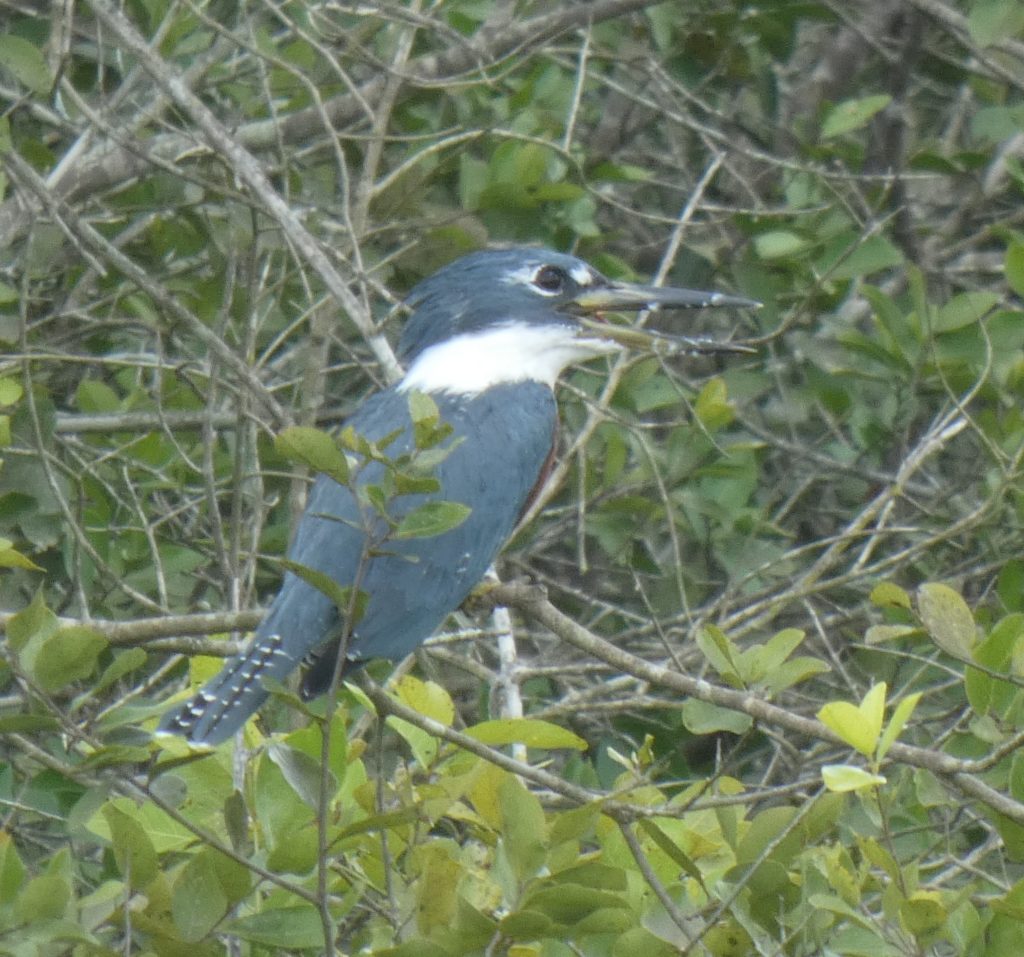
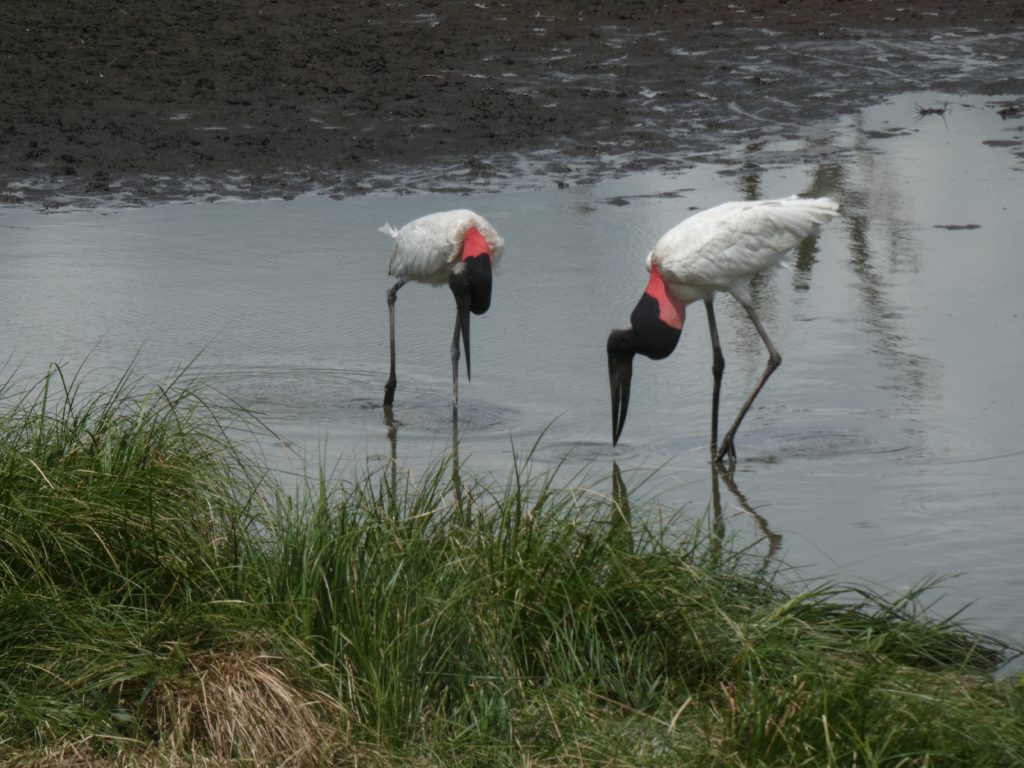


I hang behind the truck, taking advantage of the eager sets of eyes spotting movements from its high platform. All too soon, though, in only 3 miles, the truck pulls a U-turn at a large roadside St Francis statue, retroactively assigned the role, if you believe the sign, of “Protector of Ecology”.
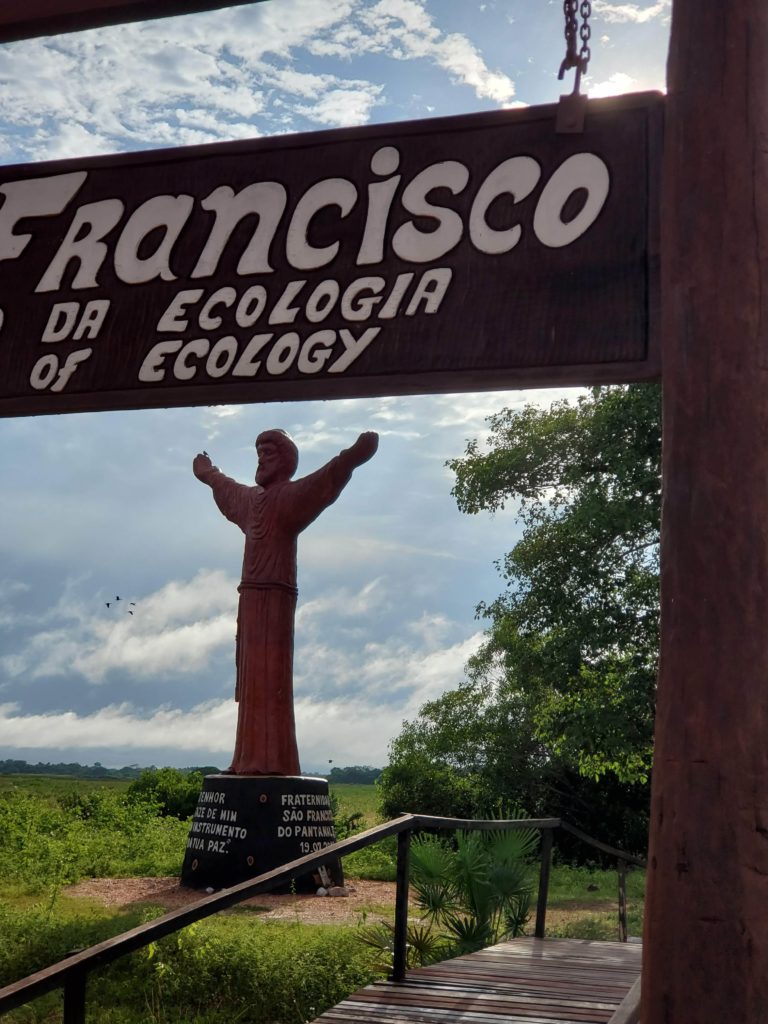
From this point on, we’re largely on our own, seeing only the occasional cattle truck or ranch pickup. The road has dozens of bridges and the early ones have been recently replaced with sturdy concrete structures. Some of the bridges cross substantial bodies of water, others span small sloughs, and others have no water at all beneath them. On each one, we stop and take advantage of its slight elevation to check both sides for interesting birds, plants, reptiles, and mammals. At one point we notice a Pantanal deer grazing in the brush.

Abut half way to Porto Jofre, the new bridges peter out and revert to wooden structures whose surface planks and guard rail timbers are in various states of disrepair, detachment, displacement, sprung up from their spikes (which are sometimes exposed flat tire hazards), or just plain missing. Each bridge requires a stop, a few seconds of analysis, careful steering to avoid the most hazardous spots, and usually a pause in the middle to scan for and appreciate wildlife, like caimans.
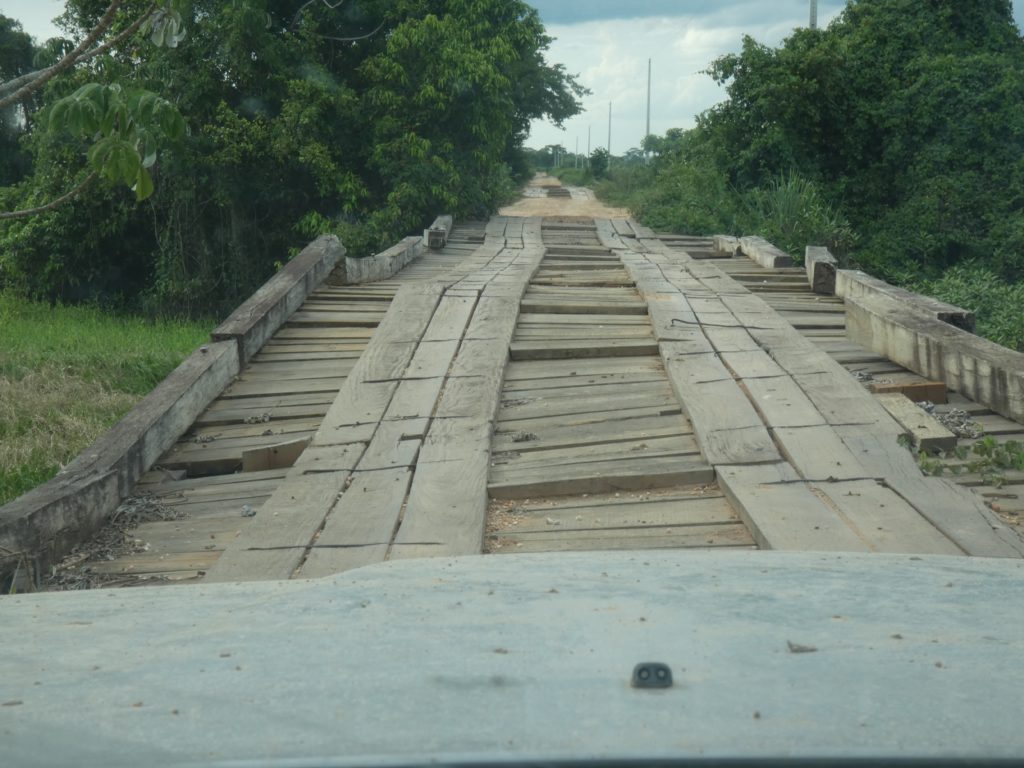
The road surface has also changes from quality gravel to dirt. There are some signs of former mud holes, but in its current dry condition they pose no problem. By about 1:30 pm we arrive at Porto Jofre, the dead end of the 89 mile Transpananeira, on the bank of the Rio São Lourenço.
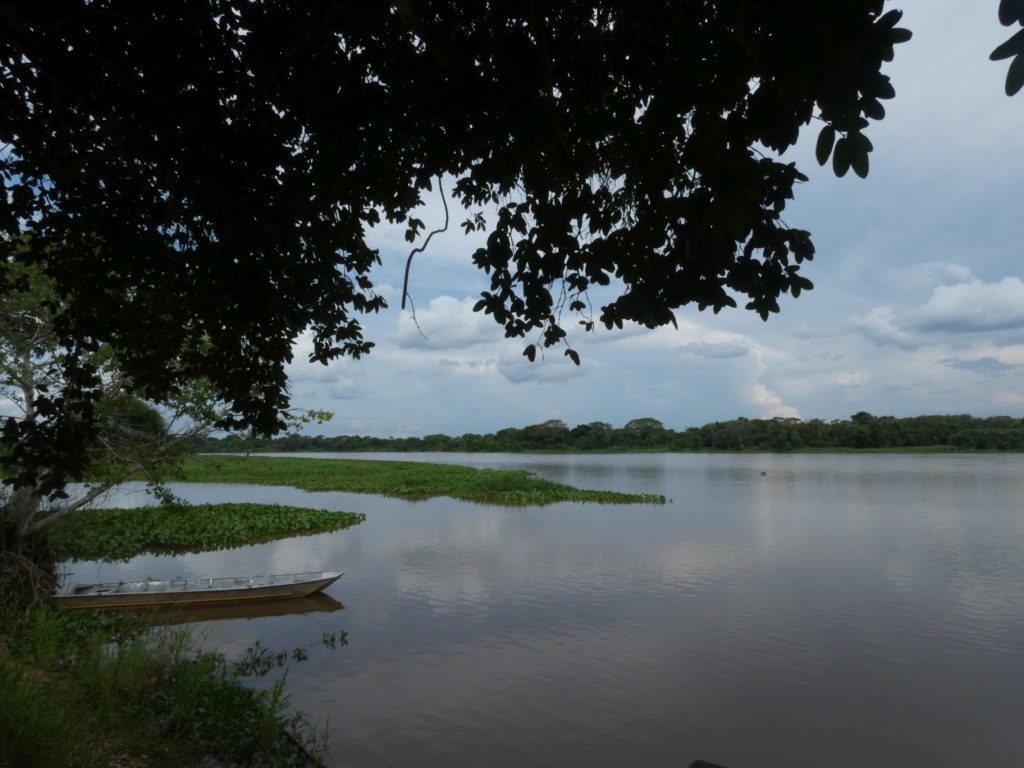
Porto Jofre isn’t a town, just a collection of buildings sprinkled along the river bank and into the jungle. There are a half dozen or so lodgings shown on the map, ranging in cost from expensive to ridiculous, so we drive out to each one and inquire. All but one are closed for their vacation — not an unreasonable indulgence since there are virtually no tourists here at this time of year. Ailton, the very friendly owner of the Jaguar Camp says his employees are all on vacation but eventually offers us a room without services if we can’t find anything else.
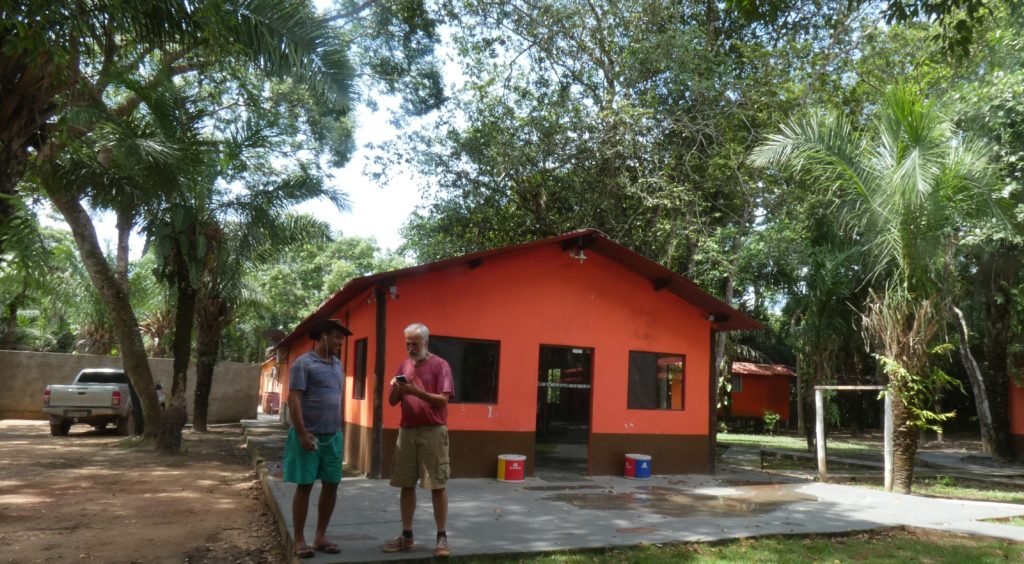
The owner of the riverside pousada/camping has a very primitive, unpleasant room. He also offers a 4 or 8 hour wildlife viewing trip but the boat barely has any shade and he doesn’t instill very much confidence. Both room and boat are quite expensive. A boat trip is our primary objective here but the thought of all day in sweltering heat and humidity under a postage stamp canopy with uncertain results overcomes the dream. As we leave the last hotel, where workers confirm that it’s also closed, I drive across an ordinary looking piece of ground as I turn to exit. Unfortunately, it’s disguised mud and the Subaru immediately breaks through the crust and gets thoroughly stuck — the first time in 45,000 miles of South American travel! With the aid of my shovel, the 4 workers, and many palm fronds for traction we extract it in about 20 minutes.

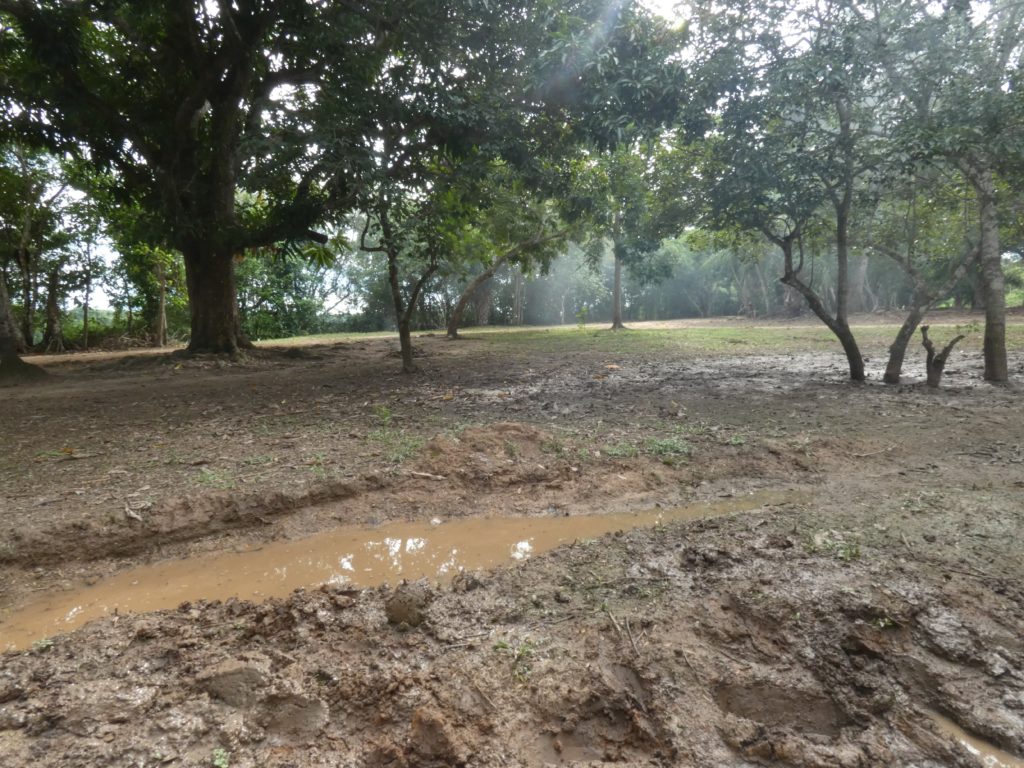
By 3 pm, with rain in the forecast, we decide we’re not going to succeed at staying here and getting an acceptable wildlife boat tour tomorrow. We decide to return to Poconé, planning to drive the last portion in the dark. First I try to fill the fuel tank, for security, but quickly discover that whatever gasoline exists in Porto Jofre is private and I can’t buy any. Reluctantly, we set off with the half tank we have. We already know the southernmost half of the road is in poor condition with rickety bridges and a dirt surface.

About 25 miles along, the rain starts and the road quickly becomes treacherous. Strangely, the expanding mud holes aren’t the big problem as the Subaru plows through even deep ones quite well.

The mud itself is the issue. I have never seen anything so adhesive. It’s essentially modeling clay or wet cement and coats the tires over an inch thick.
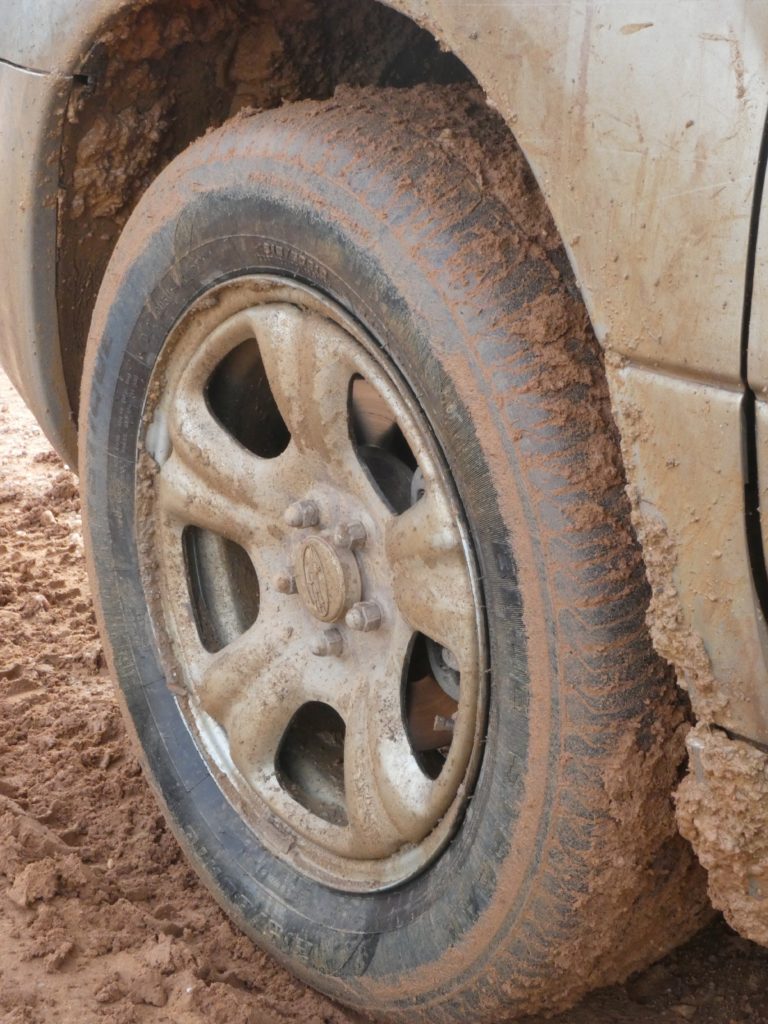
Once that happens, they become effectively bald and lose almost all traction. I’m constantly fighting to keep the car from sliding sideways as we move forward. I try to keep to the exact center of the road, which is also the muddiest and least driveable portion, to avoid any downhill slant. Even so, the car yaws 90 degrees a few times but at speeds slow enough that I can correct with anti-skid steering. We fight our way slowly from bridge to bridge, pausing on the half destroyed wooden planks for a rest before plunging into the mud again. I would characterize that drive as requiring intense focus amid continuous stress punctuated with moments of near panic. Remember, the nearest tow truck is 70 miles away with absolute zero cell phone signal and virtually no other traffic in either direction. We’re making progress, but using up our remaining daylight and more gasoline than I like. At about 34 miles, there’s a point where I’m forced to move off the center line and the clay-surfaced tires immediately slide sideways toward the steep embankment.
I get the car stopped and with very little safety margin to keep from sliding off the remaining road width, I get out and look over the situation and decide there’s too little daylight left to risk moving again and maybe making things worse. Just stepping out of the car coats each of my sneakers with about a pound of sticky clay.

Susan and I agree that we have to spend the night in the car although it will be very uncomfortable. We can’t run the air conditioner because we’re unsure if we can spare the fuel. We can’t leave the windows shut because the car will become unbearably hot and stuffy. We can’t open the windows because we’ll be bitten all night by mosquitoes and flies. We eventually decide on open windows and the use of insect repellent. We later realize our level of discomfort and concern was high enough that it didn’t even occur to us to take any photos of our situation — usually one of our first reflexes.
Susan refuses to step out of the car into the deep mud, roadside vegetation, and steep slope so she improvises a urinal out of a cooking pot. She feels very lucky to, literally, at least have a pot to piss in. Although we’re delighted to see large fireflies flitting through the darkness, we’re amazed to hear very few night noises — only a few insect sounds. The Pantanal is eerily quiet once the birds go to sleep.
I spend part of the night making a contingency plan. If we can’t proceed on our own right away, we’ll have to wait for the roadbed to dry out. That would require hours of strong sunshine and even if we got it we couldn’t sit in the car under those conditions. We have plenty of water but only a few snacks. We would both have to get to environmental safety first. Abandoning the car would mean dragging quite a lot of luggage with us as well. Once our personal escape was accomplished I’d be 70 miles from the car without transportation. The plan I settle on is to flag down the first vehicle traveling north; plead, with, bribe or force them to take us and our luggage to Poconé; and then dig deep into my wallet to hire a tow truck, which I might not even need by the time I return to the car. Plan made, I relax and snore my way obnoxiously through a series of naps, waking up to adjust the windows in response to rain or not rain. Twelve hours of sitting in the car doesn’t yield much sleep –even less for Susan than for “sleep anywhere” John.
Next post: http://blog.bucksvsbytes.com/2020/01/12/south-america-by-subaru-20-01-08-escape-from-the-clay/









